Hummingbirds are a celebration of environmental stewardship with every iridescent feather.
Plants that provide flower nectar, as well as safe perching and nesting spots are surefire ways to attract hummingbirds to the garden.
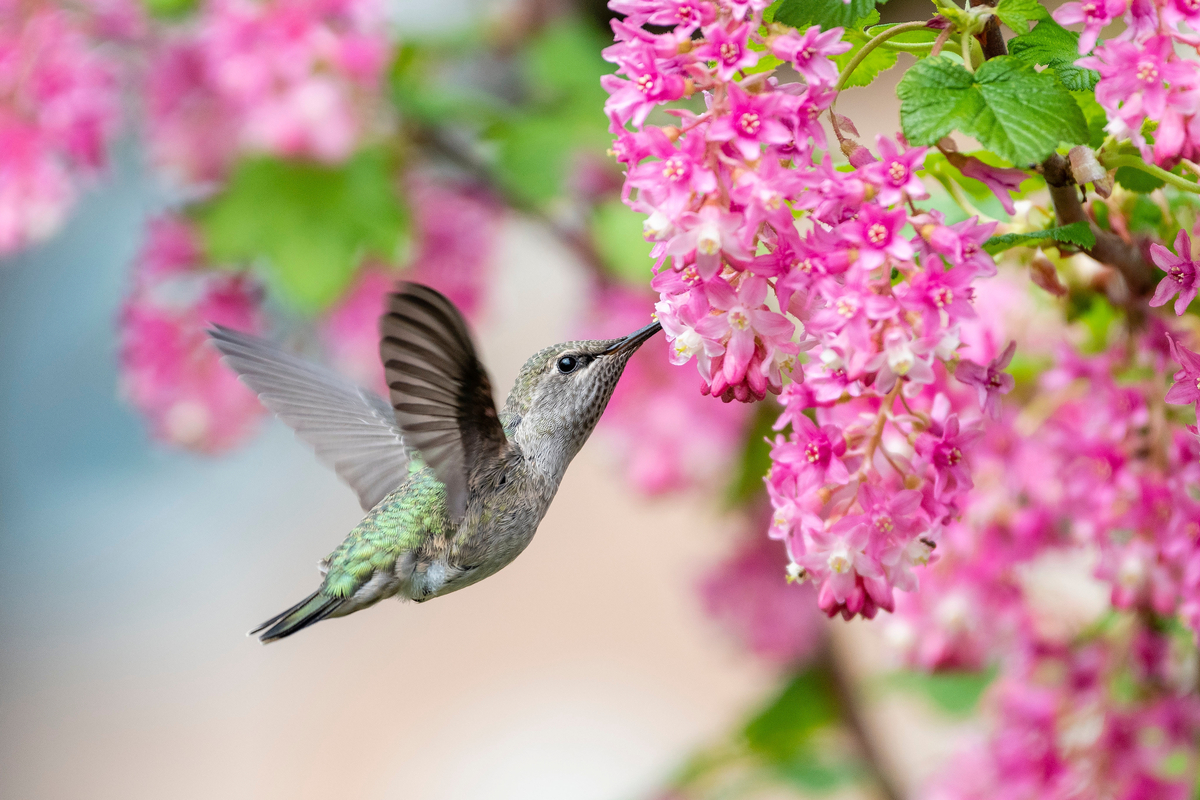
Increase hummingbird visits by providing food and shelter year after year with diverse trees, shrubs, perennials, wildflowers, and annuals.
Hungry Hummingbirds
Devouring 5 to 8 meals an hour and eating half their weight in sugar daily, hummingbirds consume flower nectar, sap, and small insects to meet their dynamic energetic lifestyle.
Hungry hummingbirds thrive on brightly colored, nectar-rich blossoms.
Hummingbirds help us out in the garden by eating plenty of small insects, like aphids.
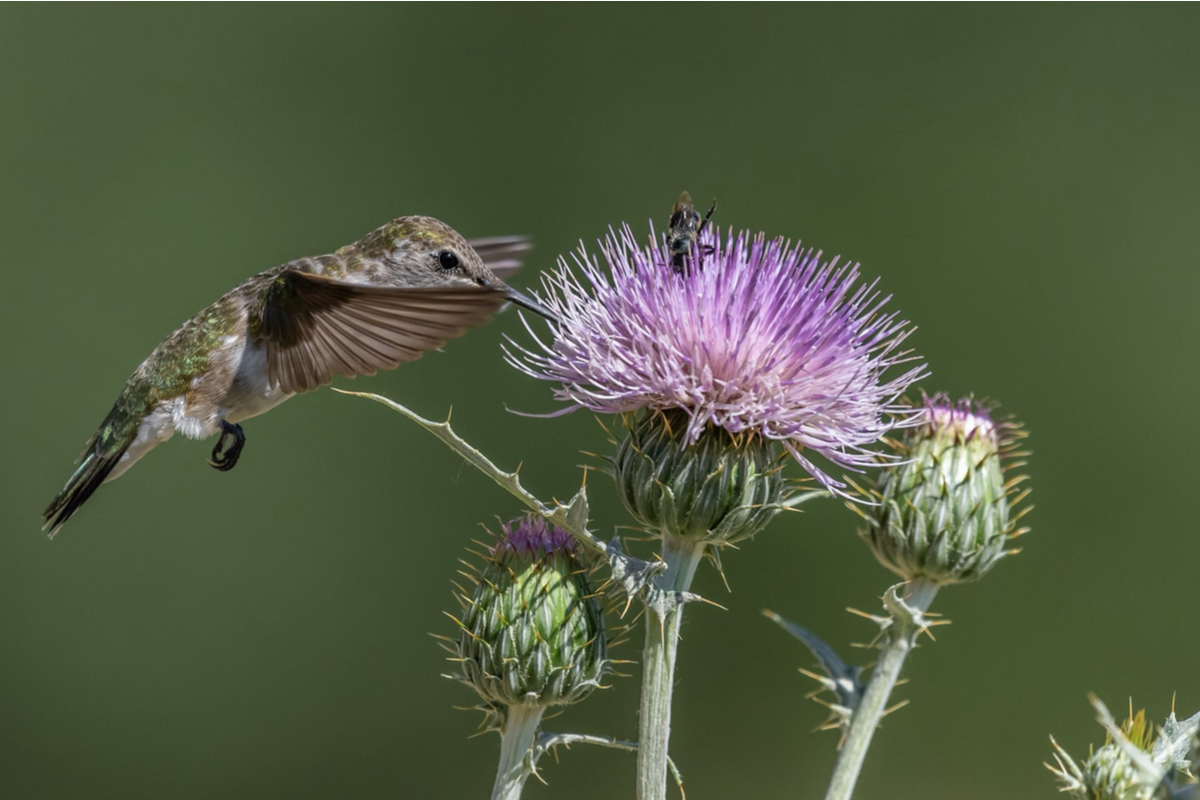
Tiny but Mighty
Fascinating in flight, hummingbirds’ aviation mastery of diving, weaving, and stopping on a dime adds drama and intrigue to our blooming backyards.
With tiny hearts that beat 1200 times each minute, wings that flap around 80 times a second, and diving speeds topping out at 60 km/h, hummingbirds are evolutionary marvels.
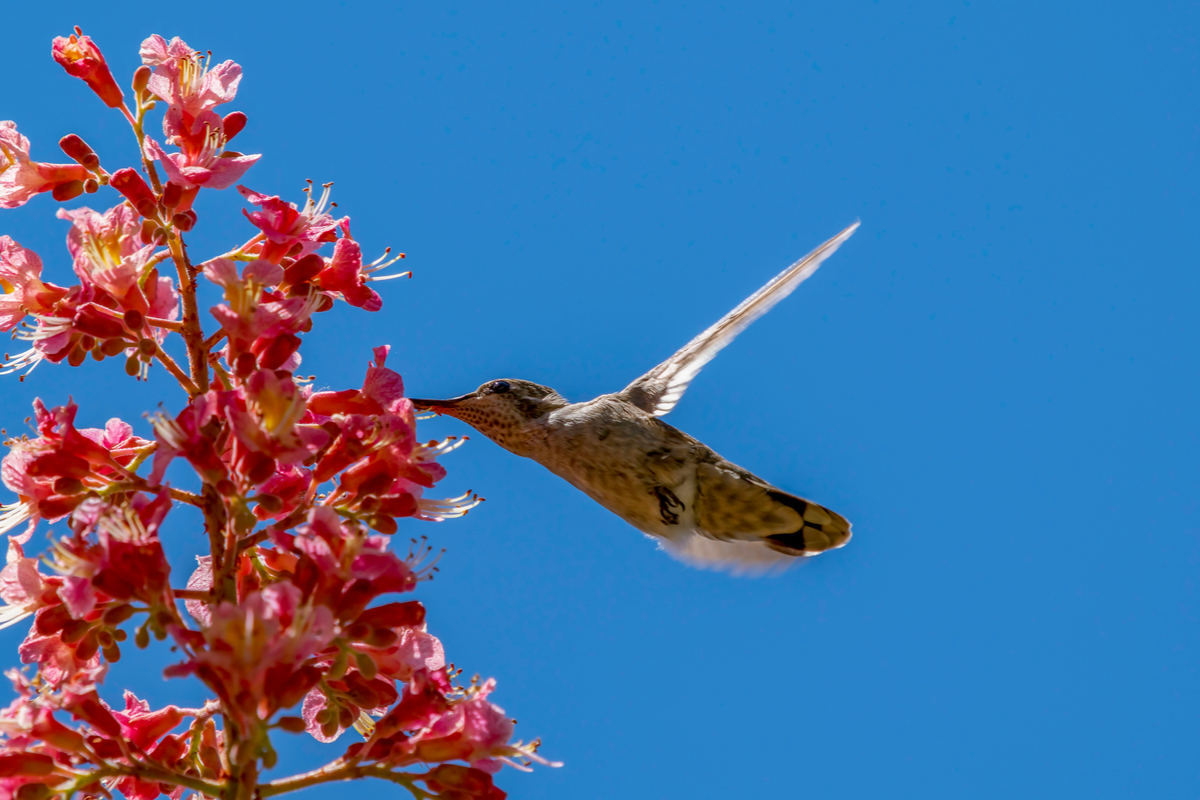
Only 3 to 4 inches long, weighing around 3.5 g, imagine a migration distance of 1800 miles with some hummingbirds traveling up to 500 miles nonstop across the Gulf of Mexico!
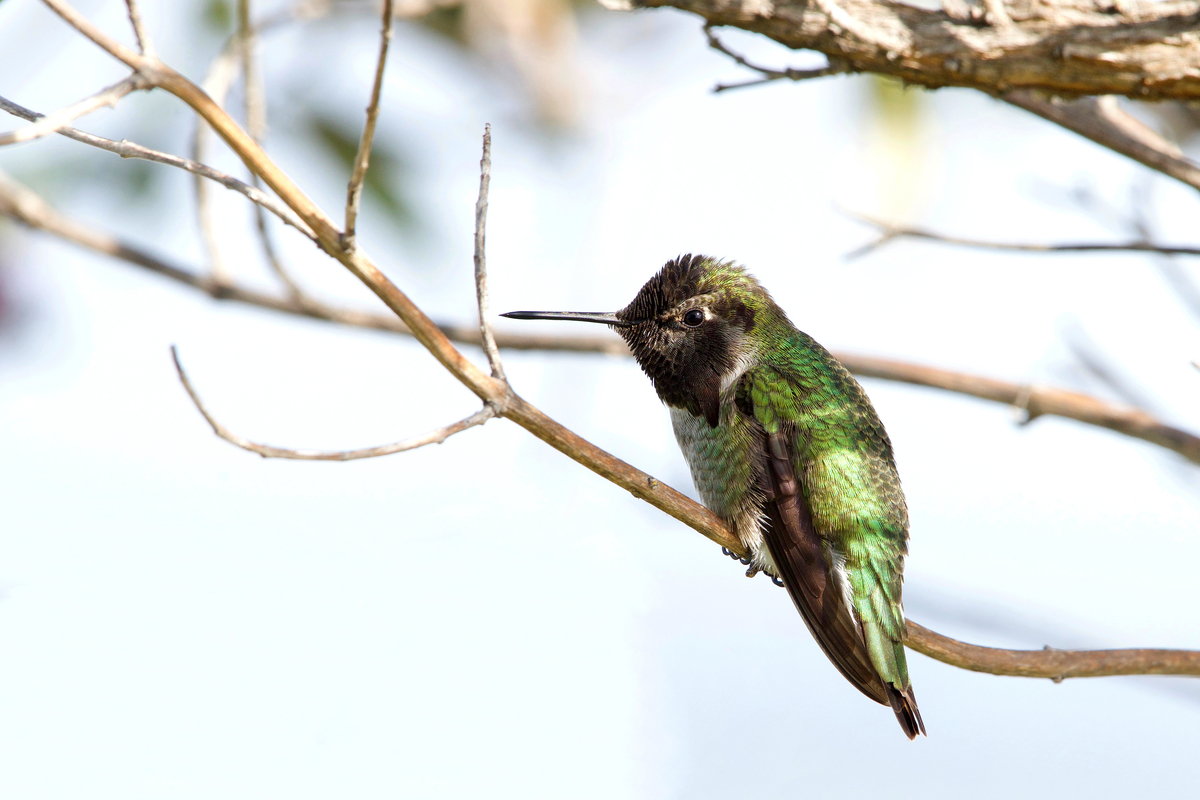
Of the 325 hummingbird species worldwide, 8 species breed in the USA, and about 24 hummingbird species visit seasonally.
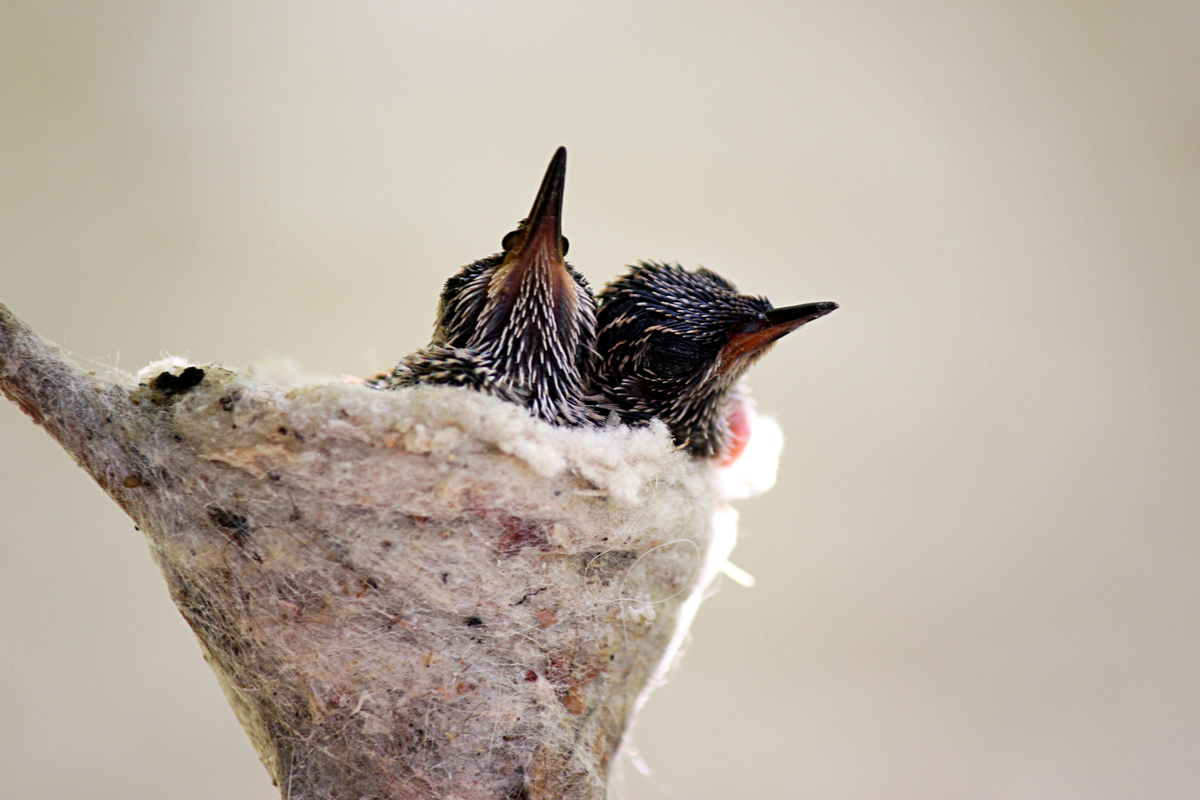
Hot Tip: Hummingbirds make their nests from lichen and spiderwebs!
Territorial and aggressive, hummingbirds valiantly protect themselves and their territory from much larger birds, even hawks.
Happy Hummingbird Habitat
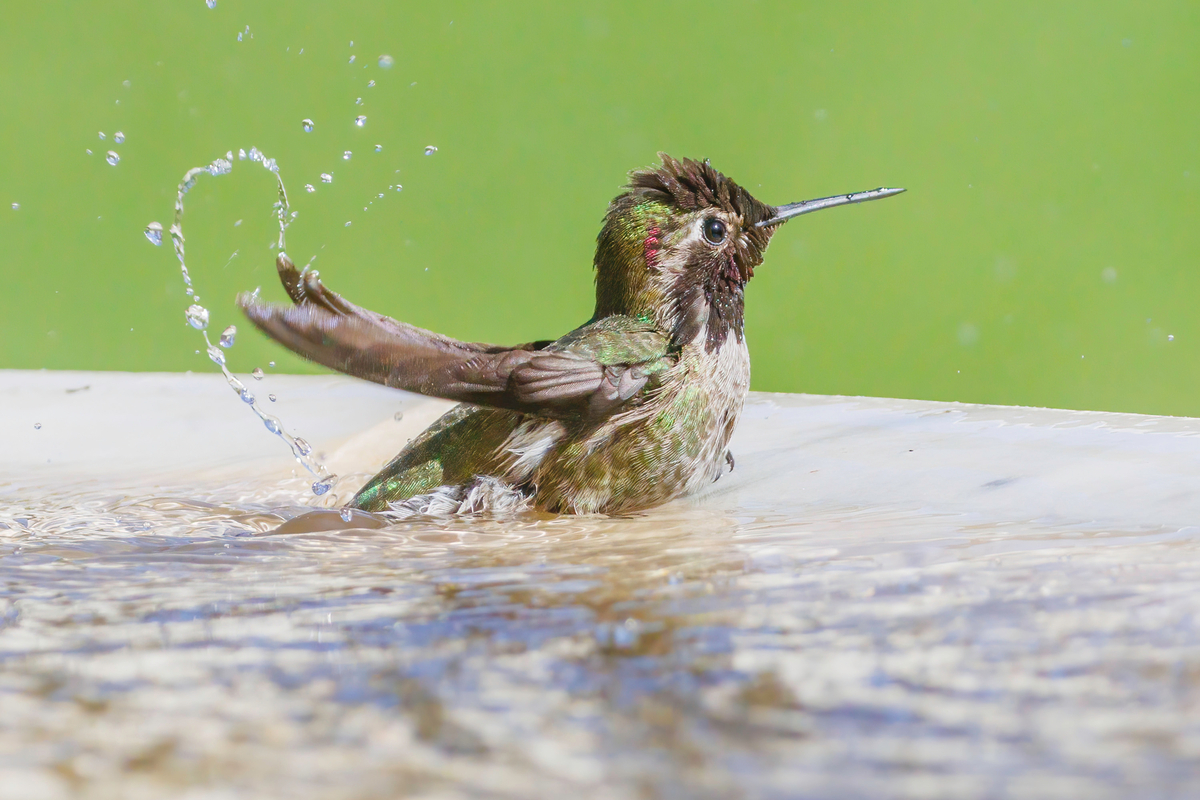
Here’s how to create happy hummingbird habitat to keep hummingbird populations healthy.
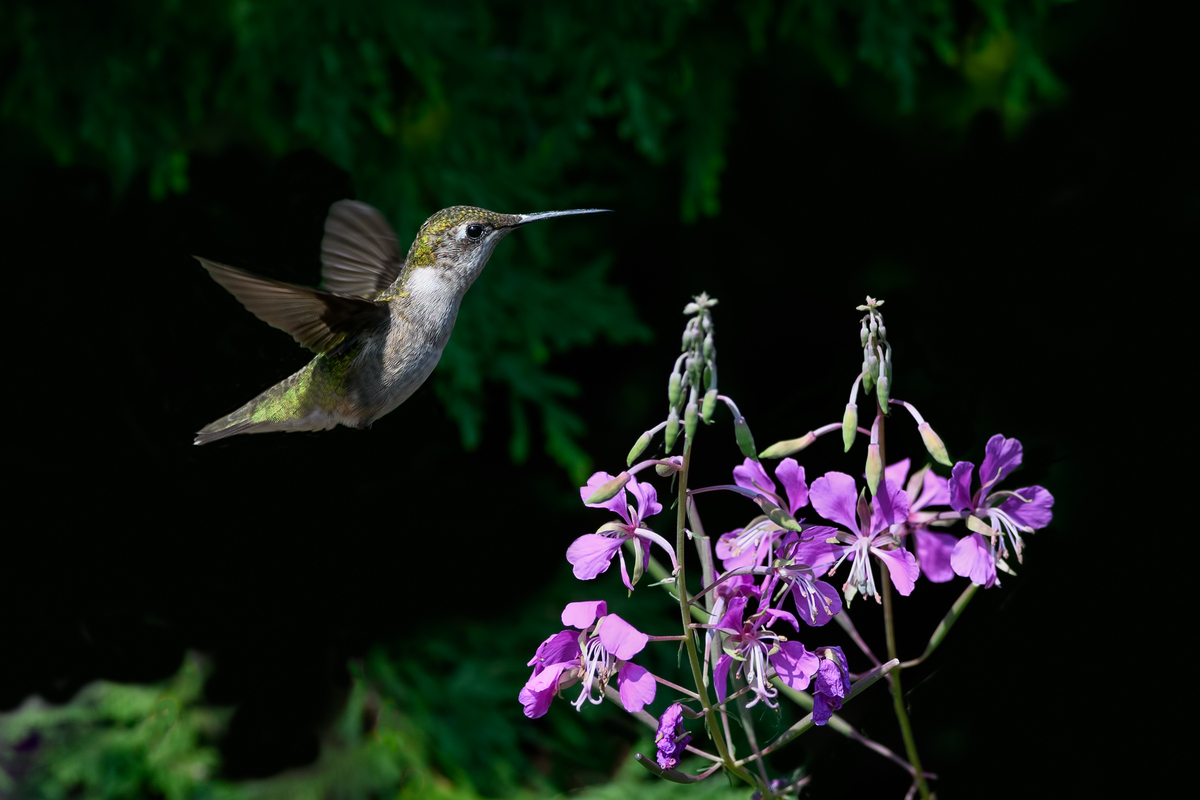
- Grow nectar-rich flowering plants.
- Plant a diverse range of flowering plants to provide multiple food sources.
- Grow plants with a wide variety of bloom times to spread out the nectar feast.
- Provide winter shelter and food sources because, surprisingly, some hummingbirds overwinter throughout areas of the USA and southern Canada.
- Encourage wild and free native plants to play host to visiting hummingbirds.
- Hummingbirds rest on perches that you can provide with wires, branches, vines, and fences.
- Provide shallow water and misting sprays for hummingbirds to cool down or remove sticky sugary nectar.
- Secluded protected areas in branches make safe nesting sites for breeding hummingbirds.
- Hummingbirds eat insects. Avoid using pesticides to secure this important food source.
- Share the love by talking to your neighbors about encouraging happy hummingbird habitat.
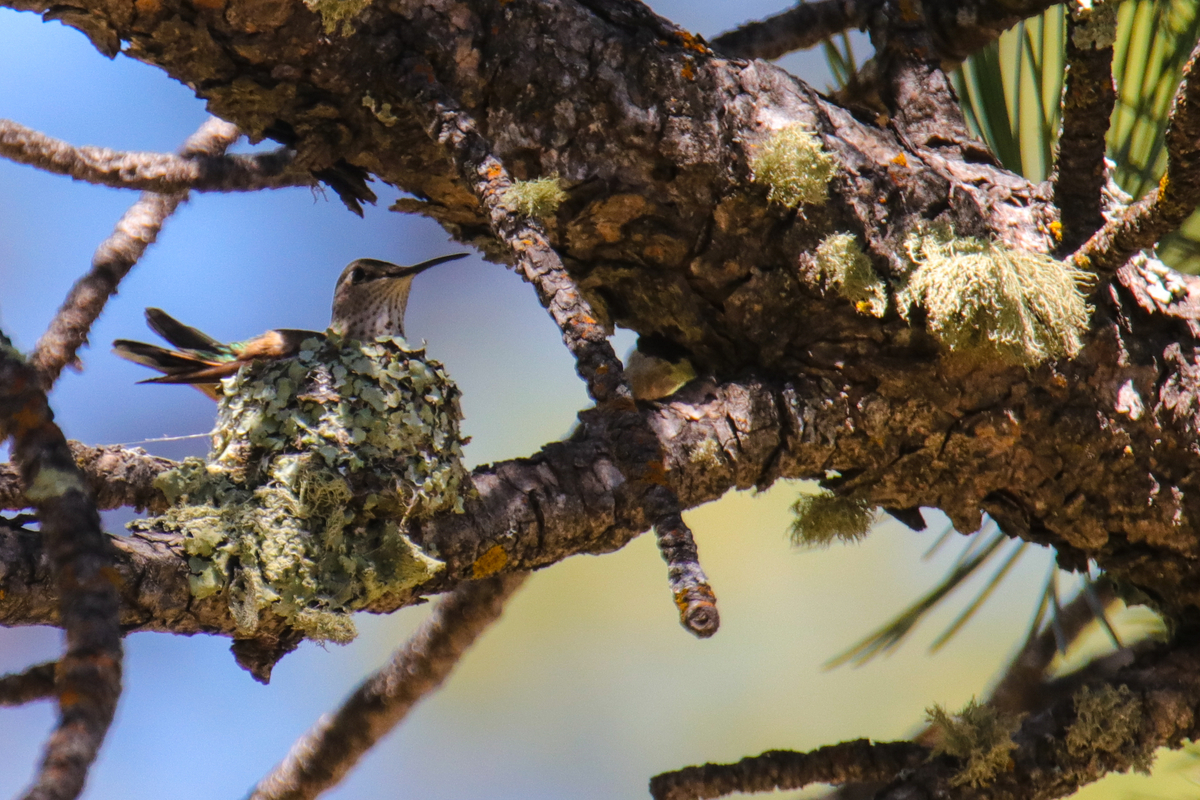
20 Best Plants to Attract Hummingbirds
Put to the test, hummingbirds visit these annuals, perennials, vines, shrubs, and trees at every blooming opportunity!

Annuals
Blooming in abundance, annuals provide hummingbirds with energy-rich nectar for many months throughout spring, summer, and fall.
1. Lantana (Lantana)

A broadleaf evergreen shrub in zones 8 to 10, Lantanas are grown as annuals in cooler climates, blooming all summer long in yellow, orange, pink, and purple.
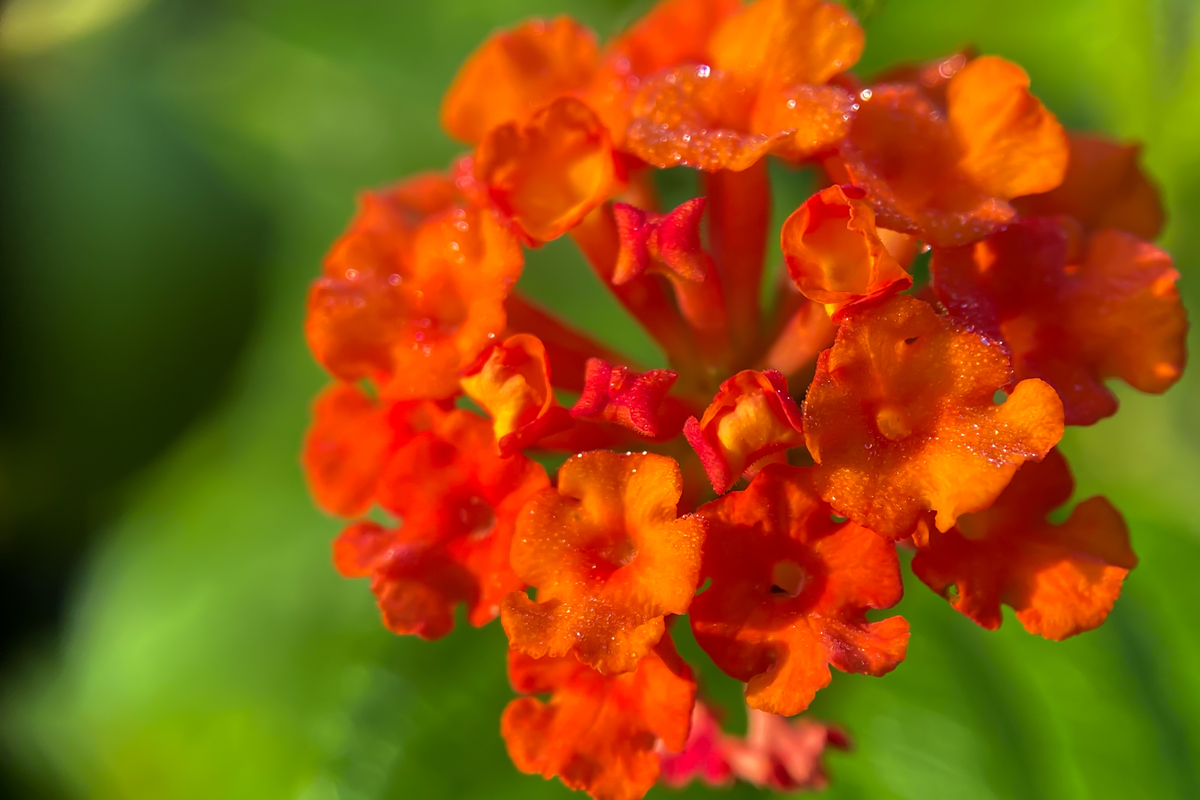
In full sun, lantana’s brightly colored prolific blossoms provide tons of nectar to nourish hummingbirds, even through hot and dry conditions.
2. Zinnia (Zinnia)

Usually grown as flamboyantly flowering annuals, zinnias grow ½ to 4 feet tall, blooming from early summer to the first frost with layers of petals in pink, purple, red, orange, yellow, white, and green.
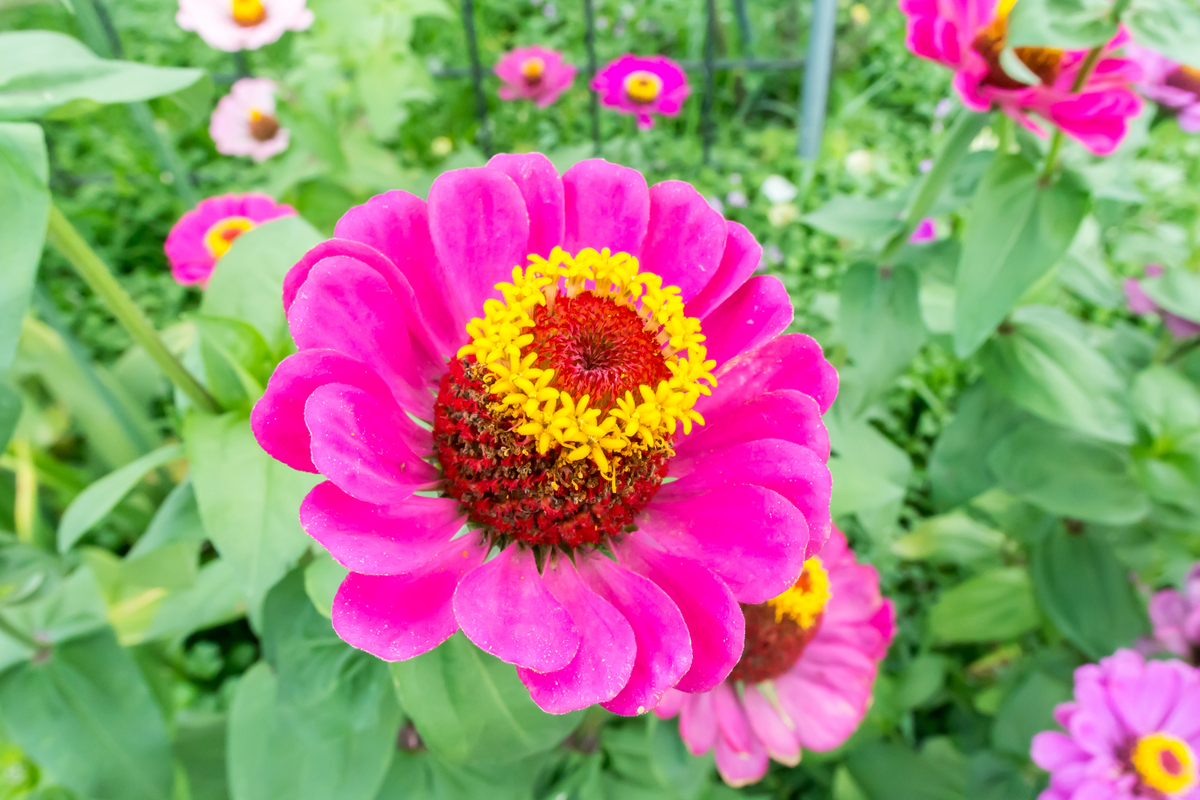
Thriving in moist well-drained soils in full sun, zinnia petals make perfect perches for hungry hummingbirds.
3. Petunia (Petunia)
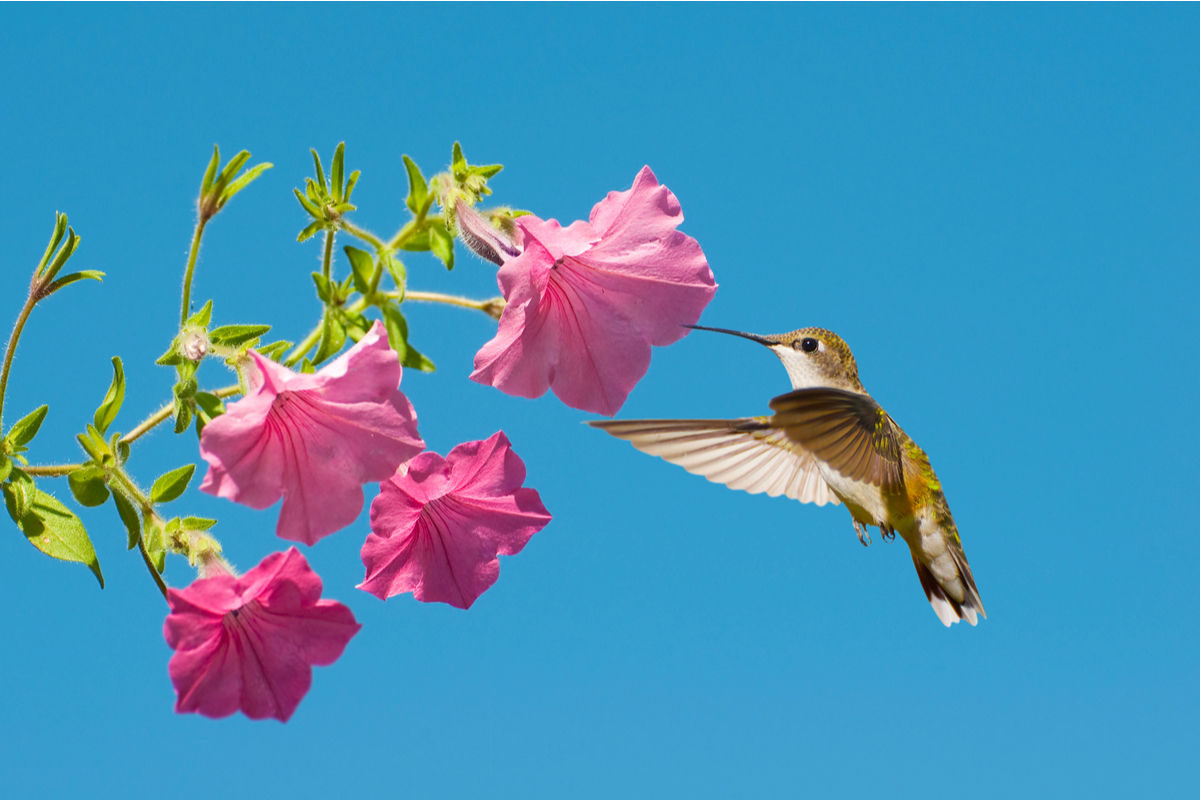
Timeless, effortless masses of color spring to fall with trailing mounding habits glorious in gardens and hanging baskets.
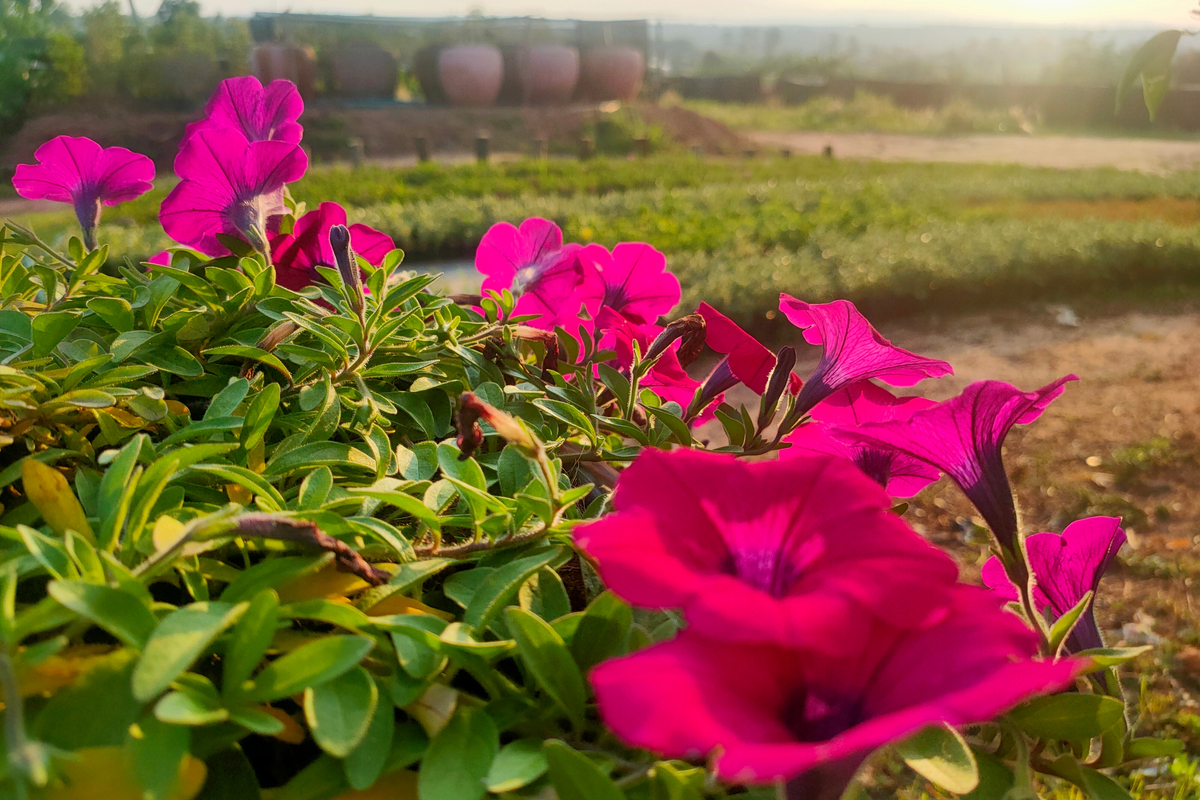
Petunia love full sun, and rich moist soils for calling in hummingbirds with their giant trumpet-shaped blossoms.
Perennials
Habituate your hummingbird visitors with these bountiful hummingbird-attracting perennials that bloom year after year.
4. Bee Balm (Monarda sp.)

During summer, with abundant blooms in pinks, purples, reds, and whites, bee balm grows 1 to 5 feet tall in zones 3 to 9.
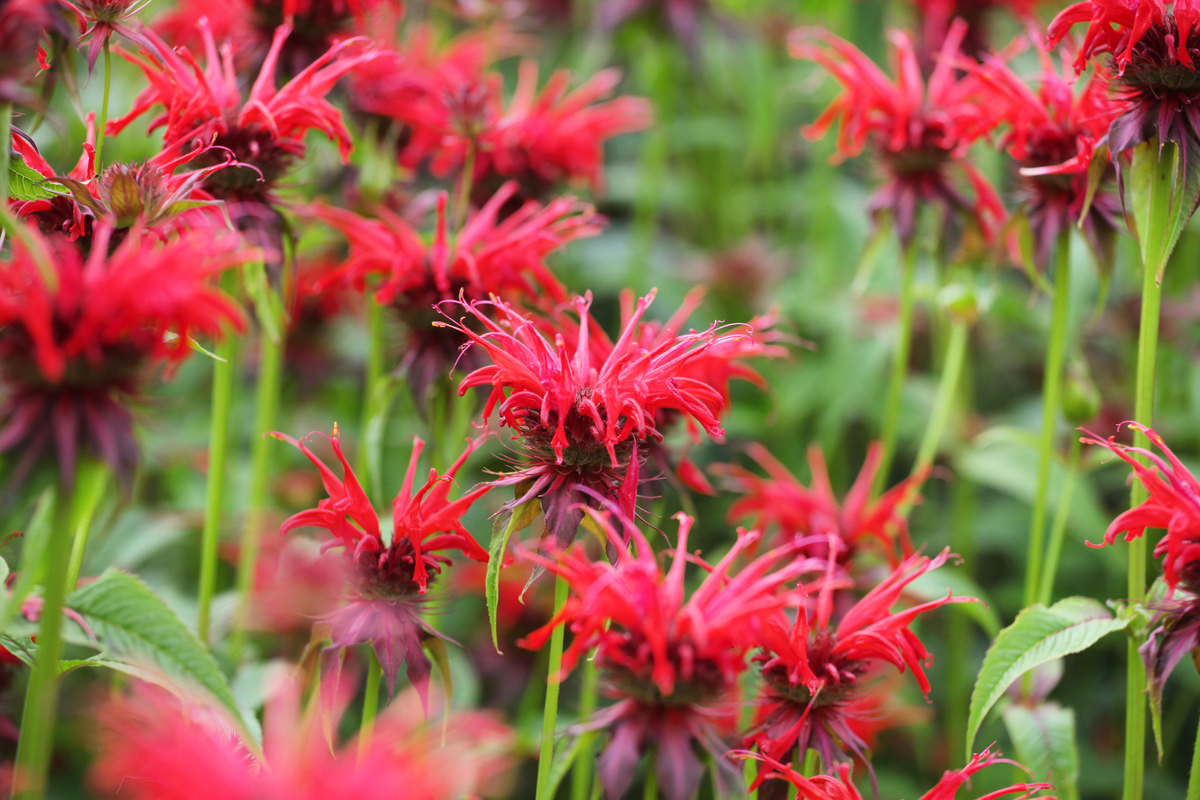
Naturally native nectar source, bee balm is a hummingbird magnet that thrives in variable conditions, full sun to part shade in moist, rich soils.
5. Cardinal Flower (Lobelia cardinalis)
Luxuriously red, in zones 2 to 9, the 8-inch scarlet spikes of blooms rise above this native 1 to 5 feet tall perennial in early to late summer.
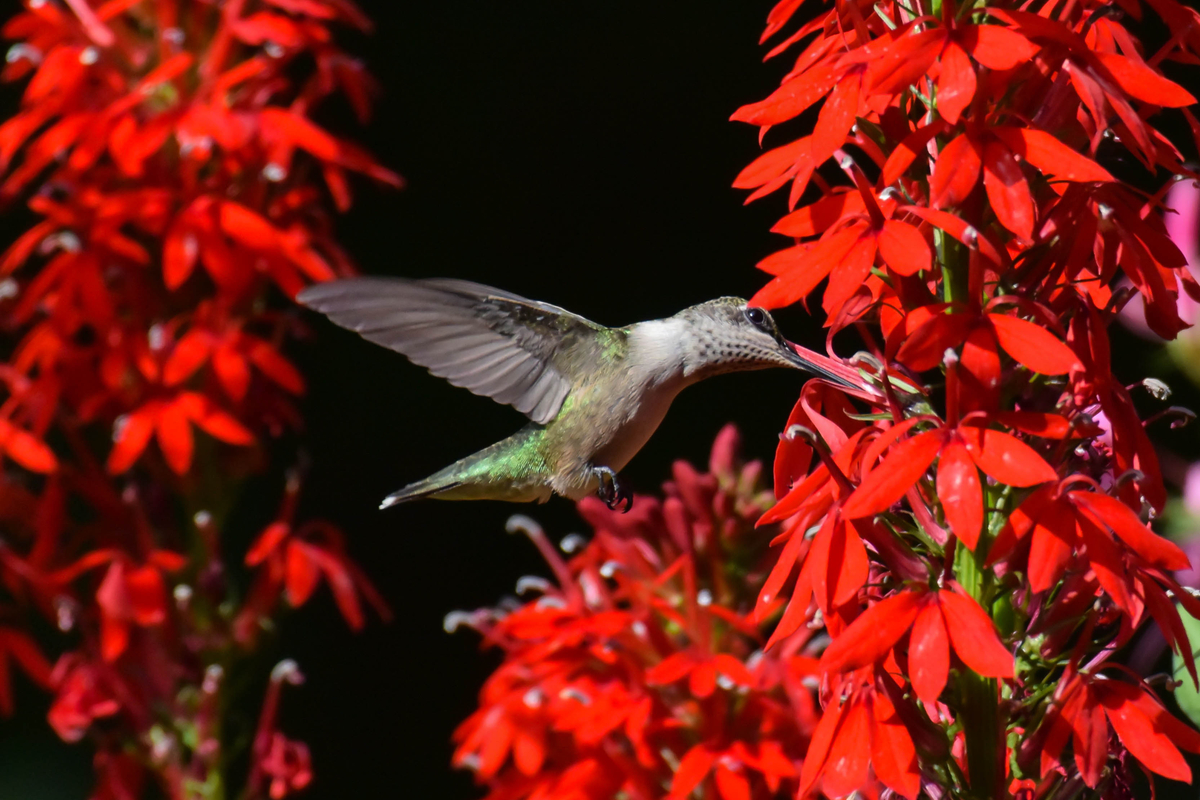
In moist sites, cardinal flowers may colonize creating a 6-week blooming feast for visiting hummingbirds.
6. Beardtongues (Penstemon)
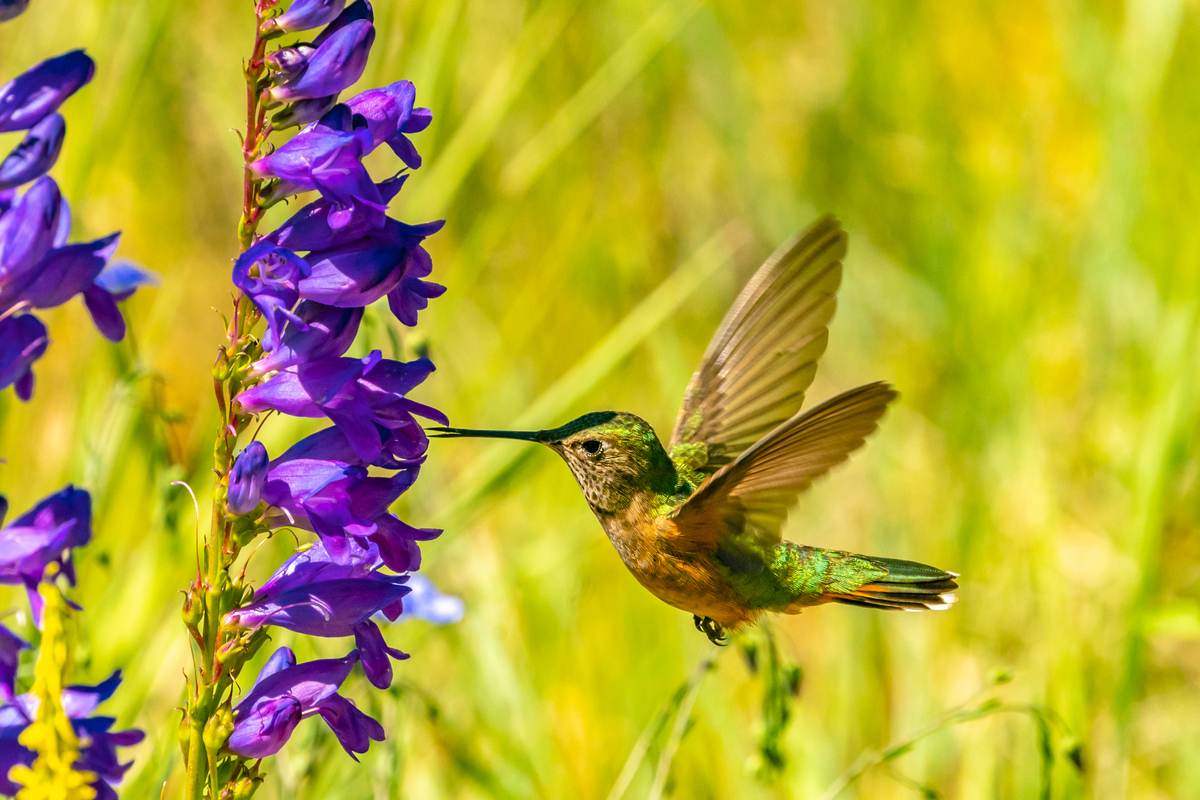
Penstemon is a North American long-blooming native plant, with white, blue, purple, red, yellow, and orange flower spikes from May to October that reaches 1 to 4 feet tall in zones 3 to 9.
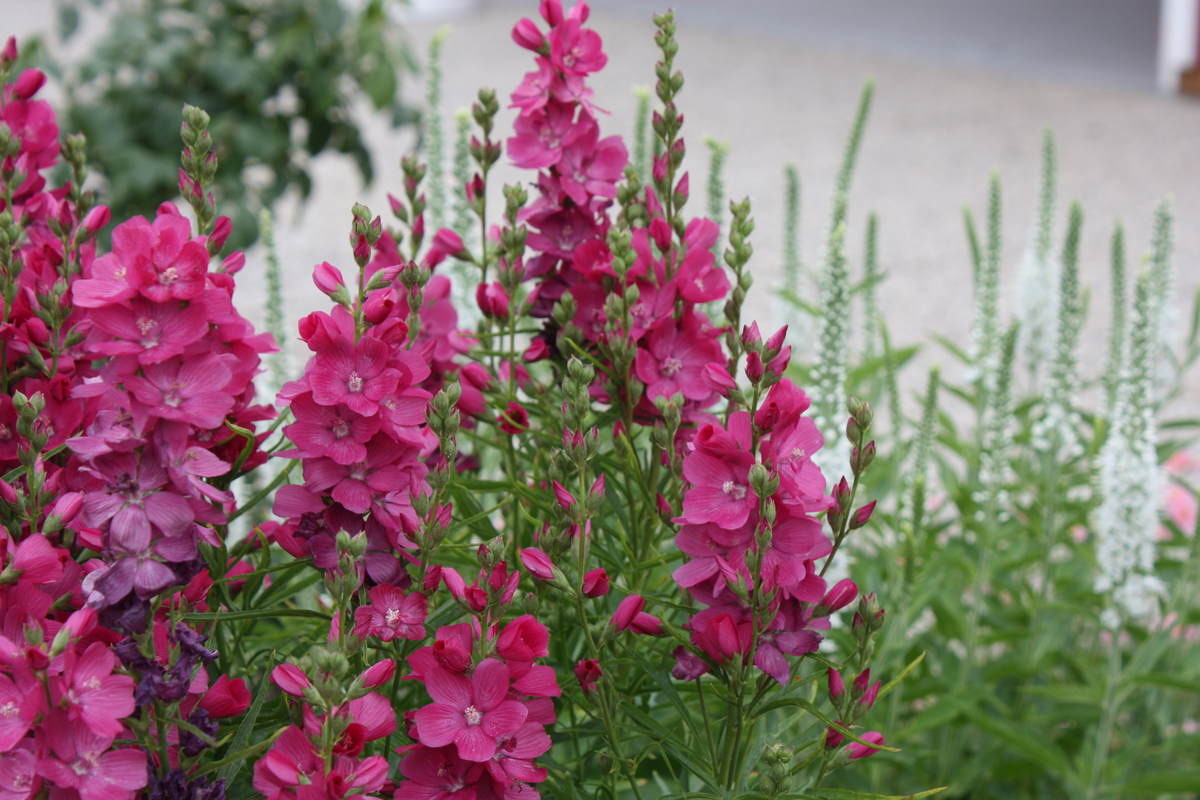
Full sun and excellent drainage are all you need to grow these low-maintenance wild hummingbird feeders.
7. Red Hot Poker (Kniphofia)
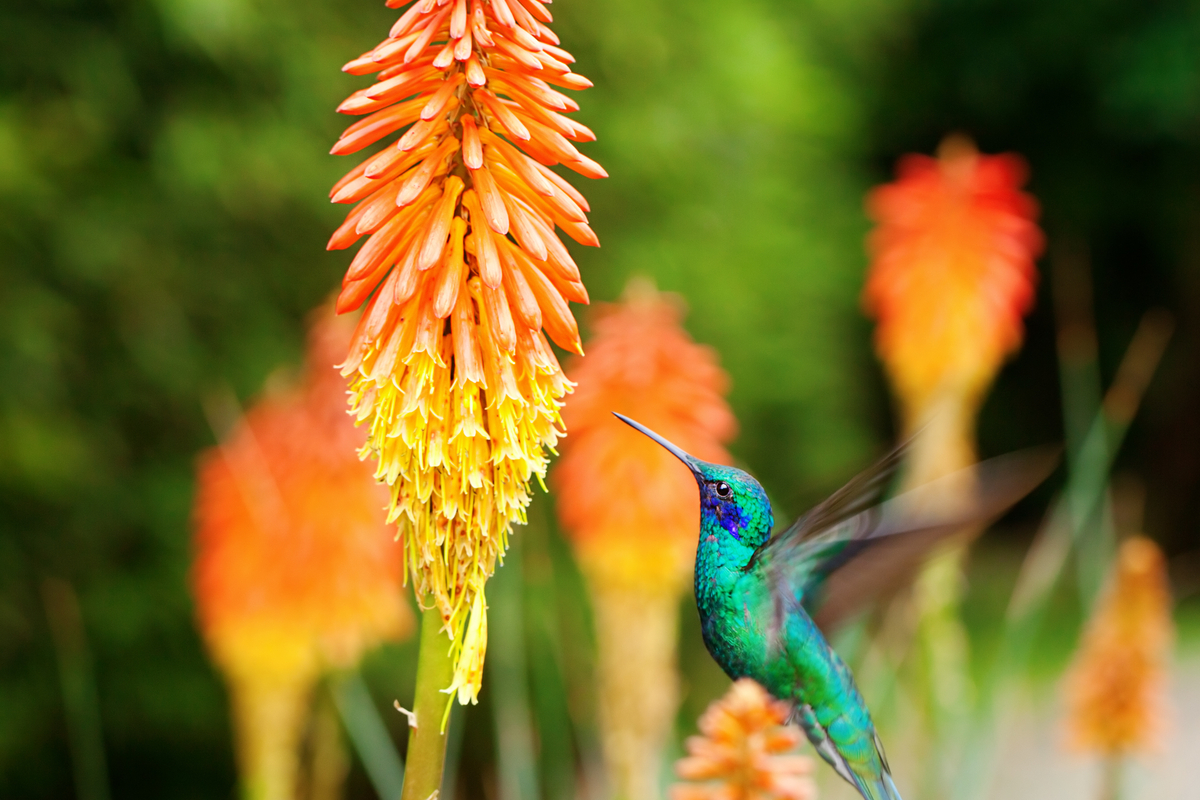
Also known as torch lily, Red Hot Poker blooms 2 to 4 feet tall red, orange, and yellow, nectar-rich bottle-brush blooms throughout summer in zones 5 to 9.
This extravagant nectar producer brings in the hummingbirds while thriving in full sun in dry and drought conditions.
8. Echinacea (Echinacea sp.)
Found in gardens and growing in the wild, spectacular echinacea varieties range in fantastic color and flower forms for zones 3 to 9, blooming all summer up to 4 feet in height.
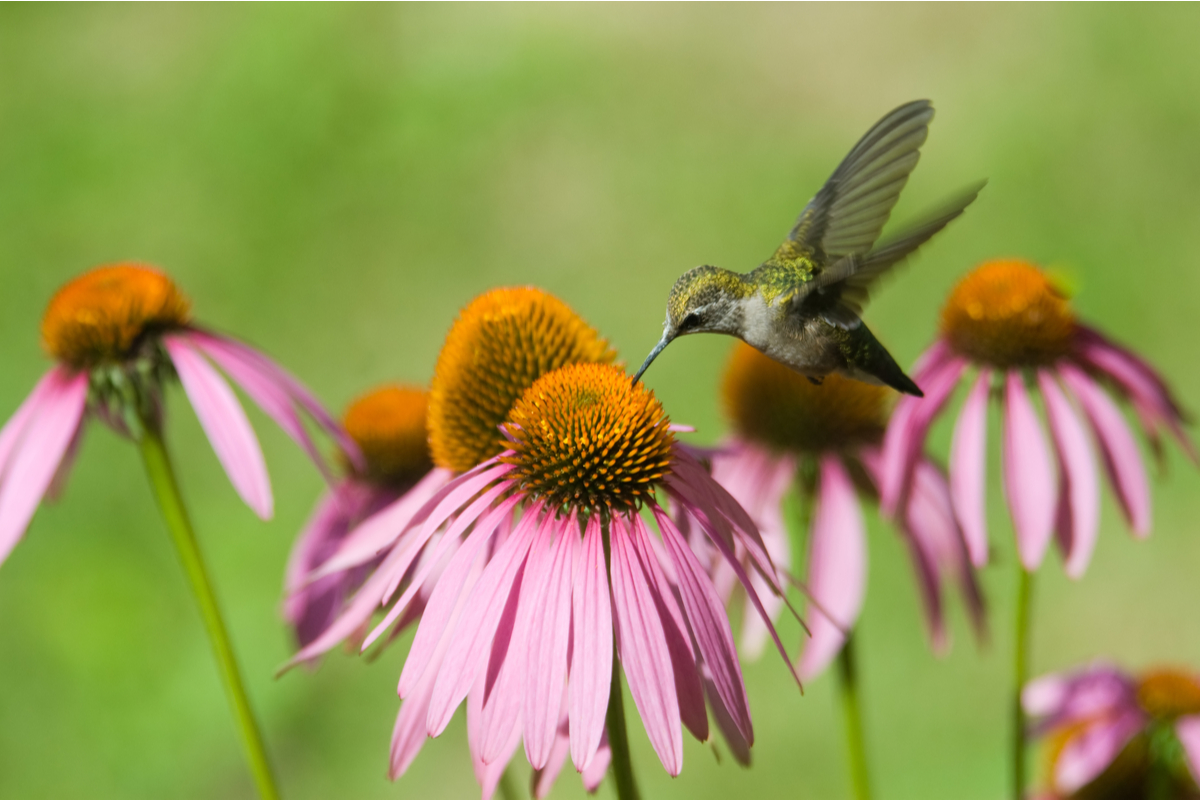
The quintessential plant for all forms of wildlife gardens, echinacea provides abundant nectar in full sun to part shade loving both drought and moist conditions.
9. Sage (Salvia)
With over 700 species that grow 10 to 60 inches tall, varieties of salvia are both annual or perennial with spikes smothered with whorls of tubular red, blue, or purple flowers in summer.

Not only is sage drought tolerant, but also Sage’s high nectar content creates a veritable feast for hummingbirds.
10. Bleeding Heart (Dicentra)
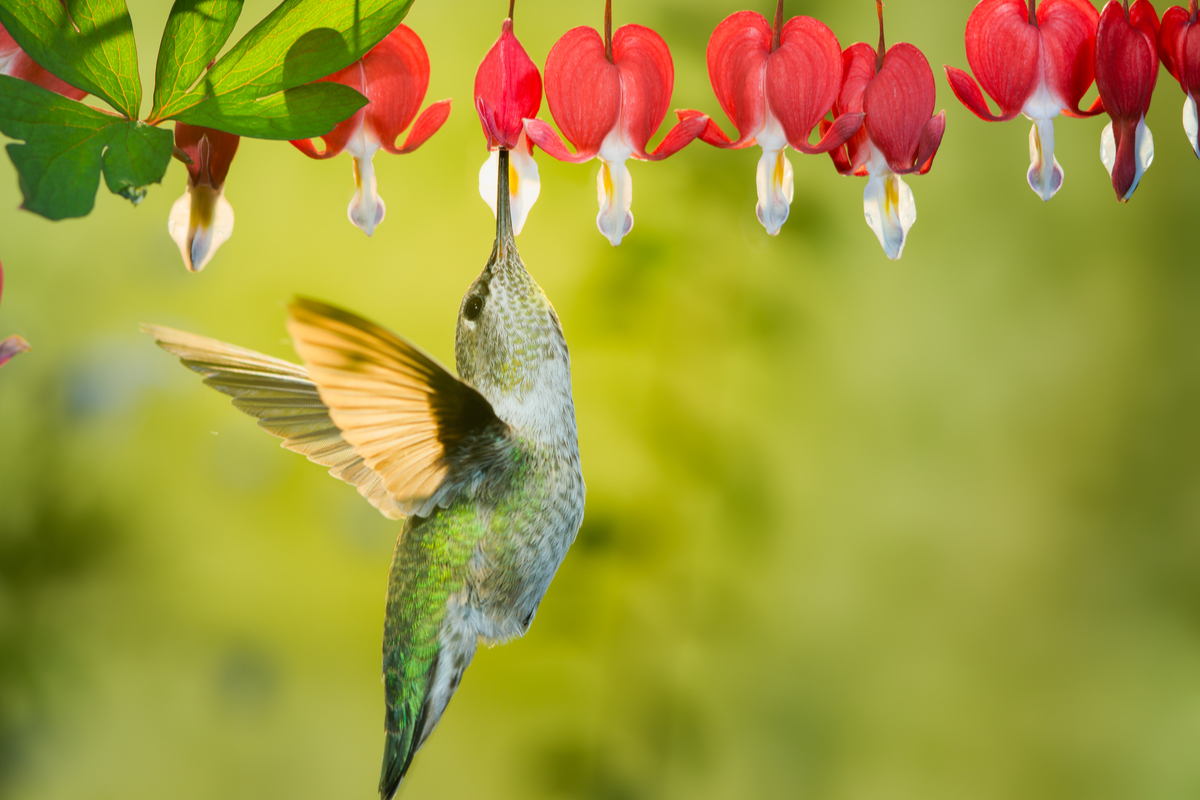
Finely cut leaves and arching stems with springtime graceful dangling heart-shaped red, white, and pink flowers in zones 2 to 9, bleeding heart is a surprisingly tough, shade-tolerant perennial.
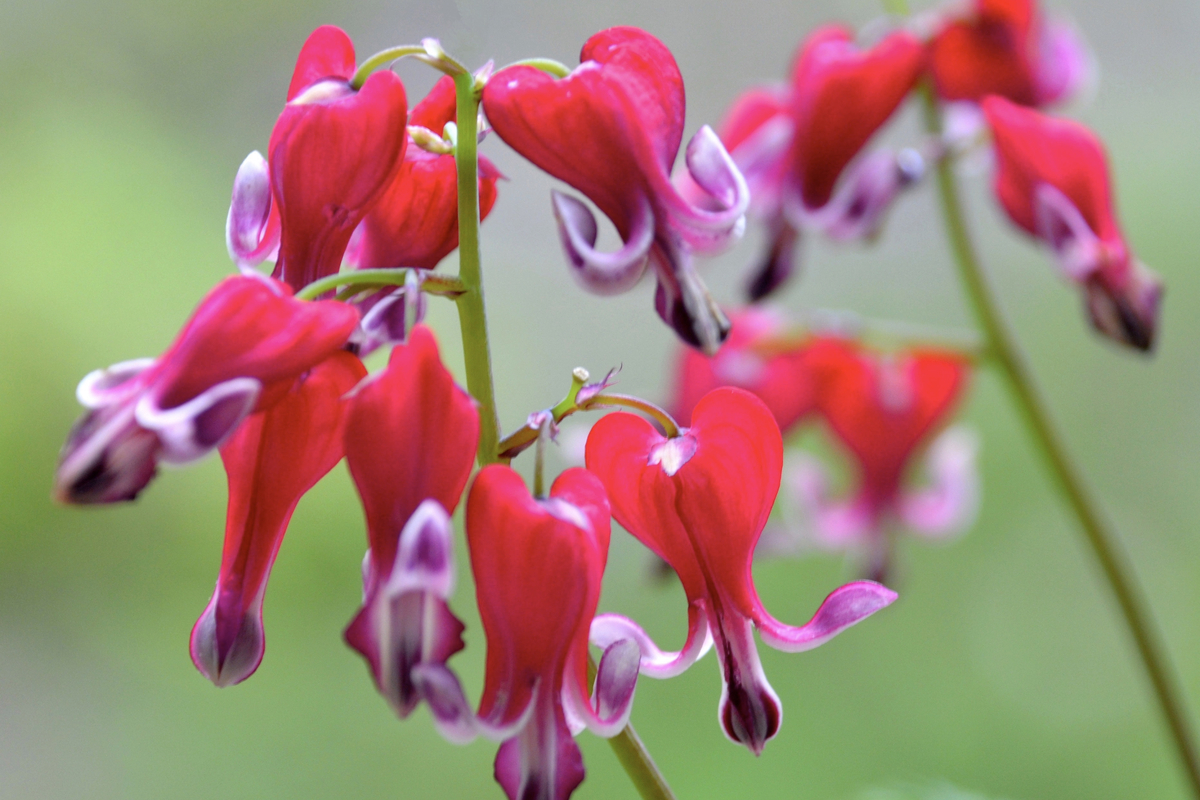
Perfect for perching, hummingbirds visit this classic perennial year after year resting on the bowed stems in the shade and enjoying the nectar.
11. Columbine (Aquilegia)
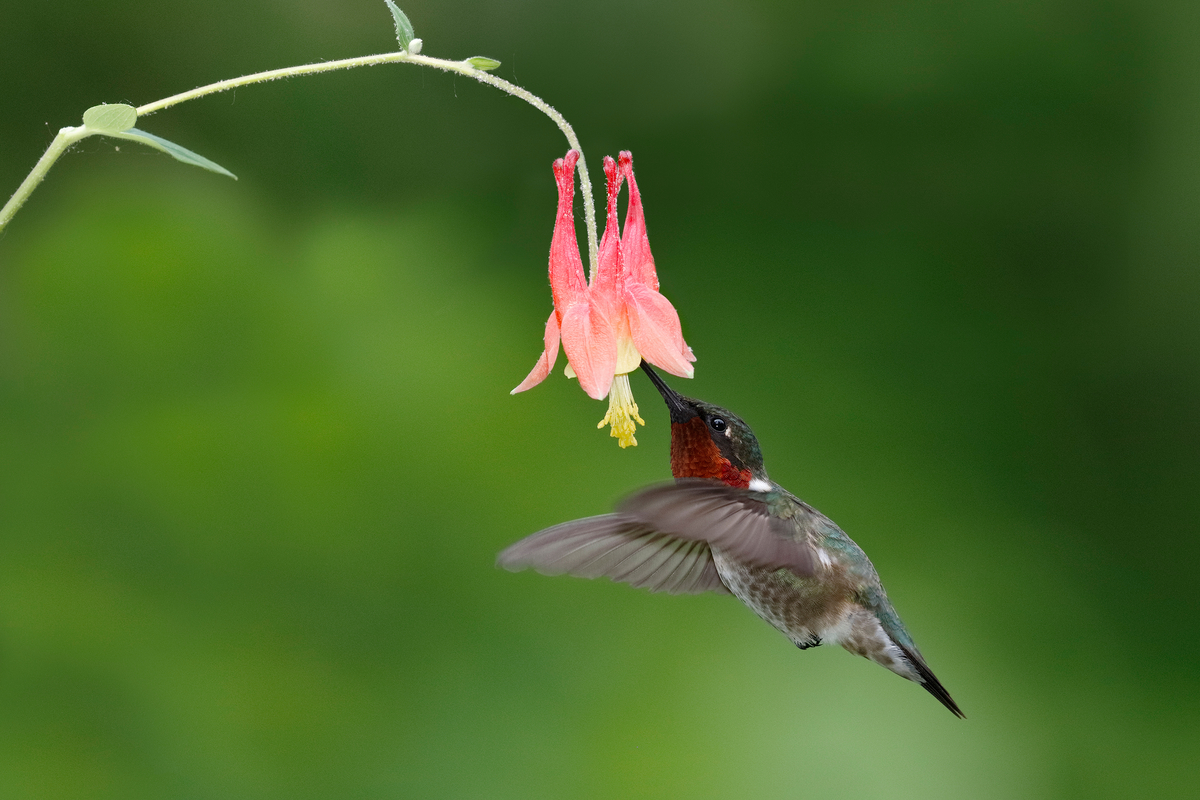
Keeping it wild, columbine’s spring-blooming red, blue, purple, pink, yellow, and white multicolored tubular spurred flowers are native North American, Asian, and European perennial that thrives in zones 3 to 8.
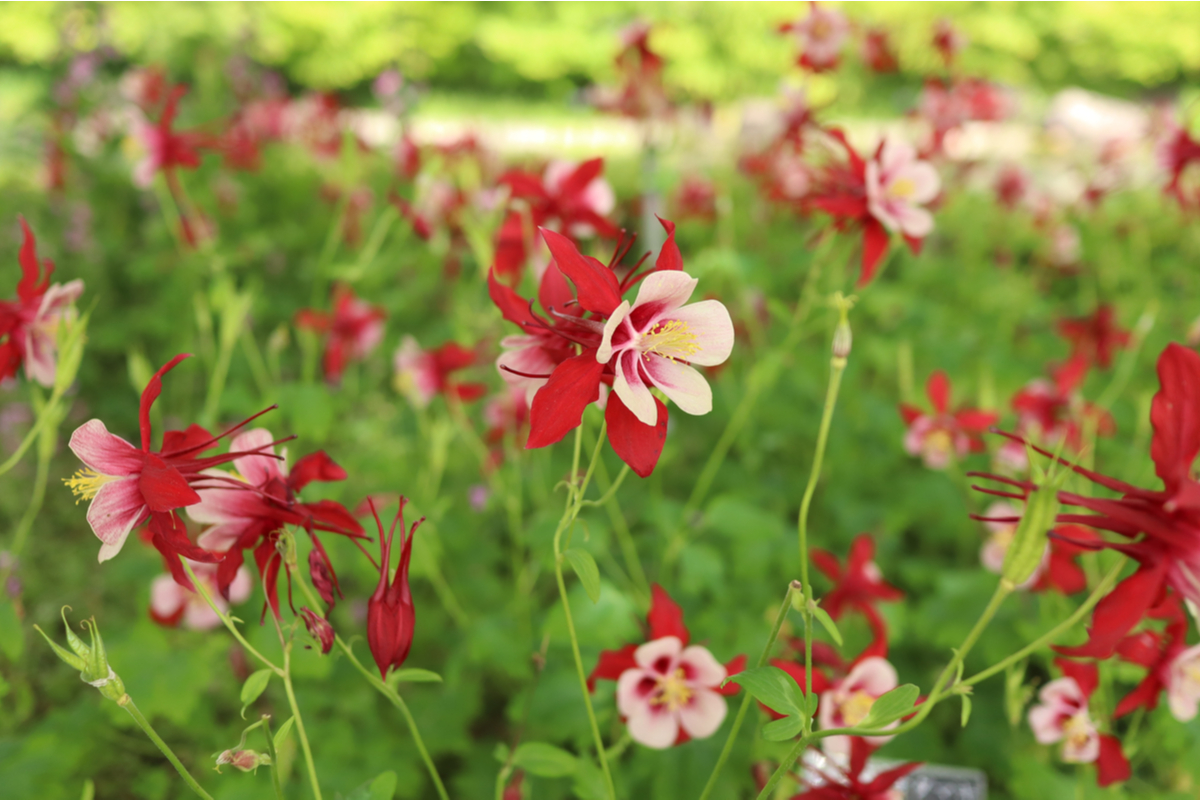
Hummingbirds incidentally help pollinate columbine’s pendulous flowers that grow in woodlands and meadows in full sun to part shade.
12. Garden Phlox (Phlox paniculata)
Tall upright 2 to 3-foot garden phlox is a long-blooming fragrant nectareous summer perennial with extravagant brightly colored panicles smothered in white, pinks, reds, and purple flowers.
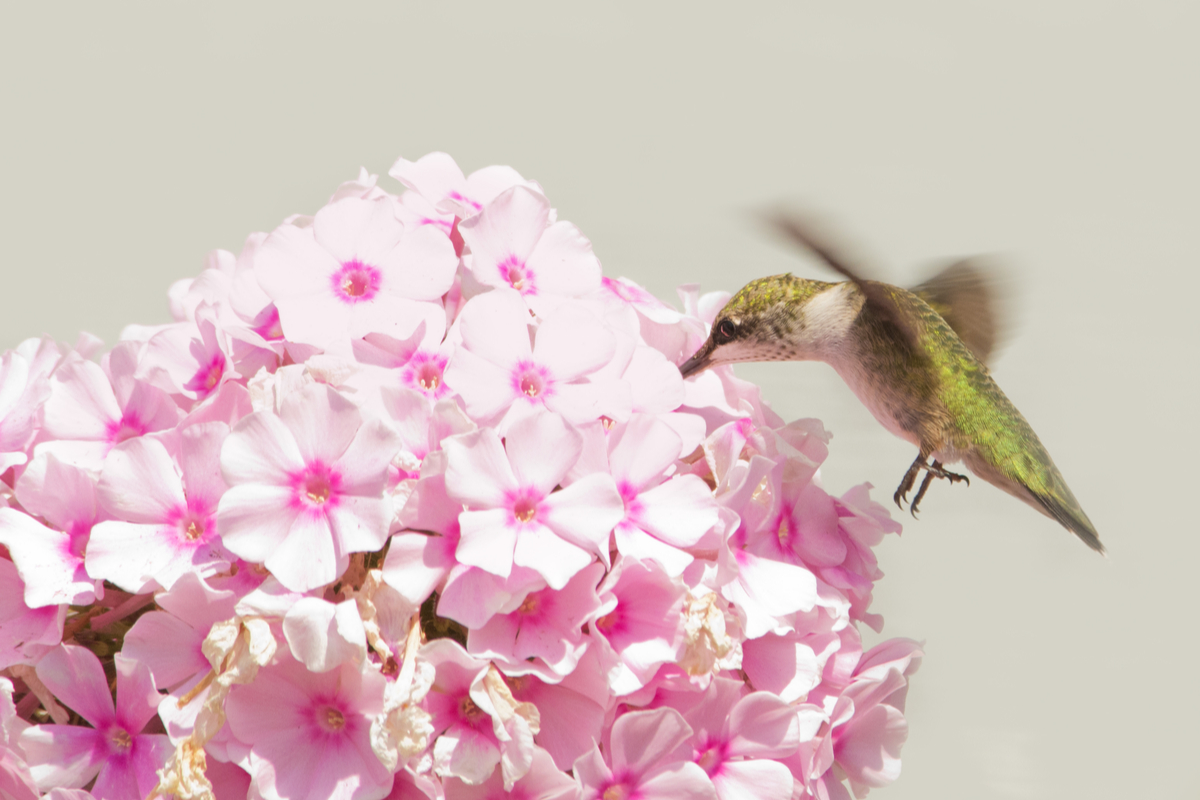
In zones 4 to 8, phlox is a tough long-living perennial loved by hummingbirds and avoided by deer.
13. Delphinium (Delphinium)
Along with hollyhock, delphiniums are prized in cottage gardens, blooming epic spires of blue, purple, pink, and scarlet flowers whorled on 2 to 9-foot stems in summer in zones 3 to 7.
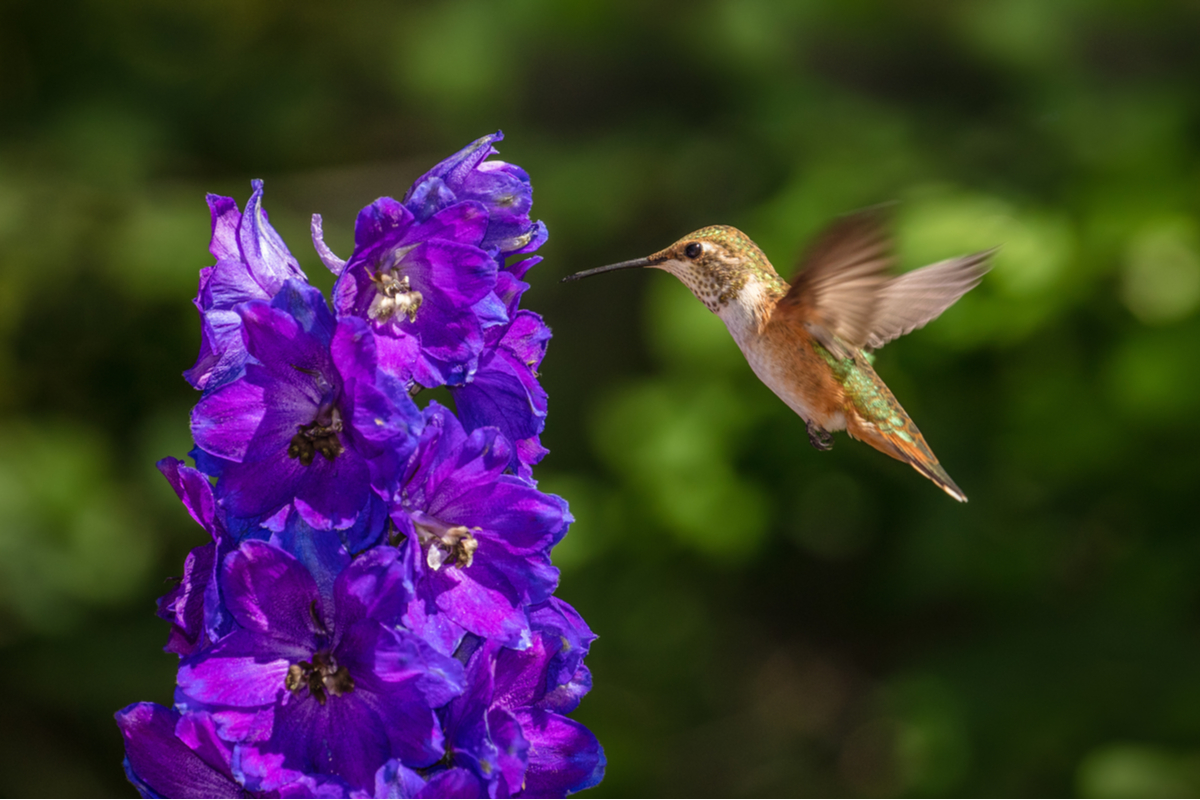
Providing an important nectar resource, delphinium grows better and better each year, being well-suited to the back of perennial borders, preferring slightly alkaline soils, and excellent air circulation.
14. Crocosmia (Crocosmia)
Late season funnel-shaped blooms in sunset shades of reds, oranges, and yellows beckon late summer hummingbirds in zones 5 to 9.
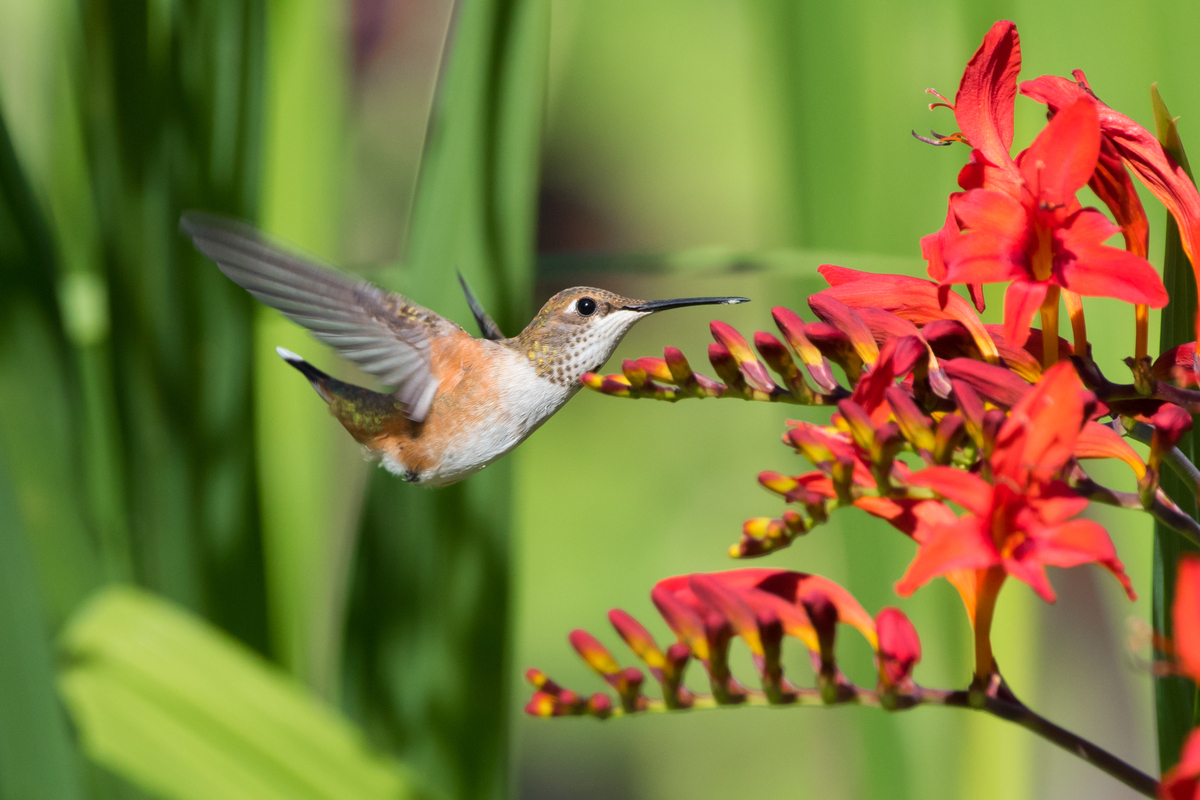
A clump-forming bulb that reaches up to 3 feet tall in full sun to part shade, crocosmia multiply or can be grown like summer-blooming tender bulbs in colder climates.
Vines
Reach for the skies with vines on supportive structures to give hummingbirds plenty of elevated flower options.
15. Honeysuckle (Lonicera)
Abundant non-invasive native honeysuckle varieties are available for zones 3 to 9, generally reaching 15 to 30 feet, and burst into bloom spring through summer.
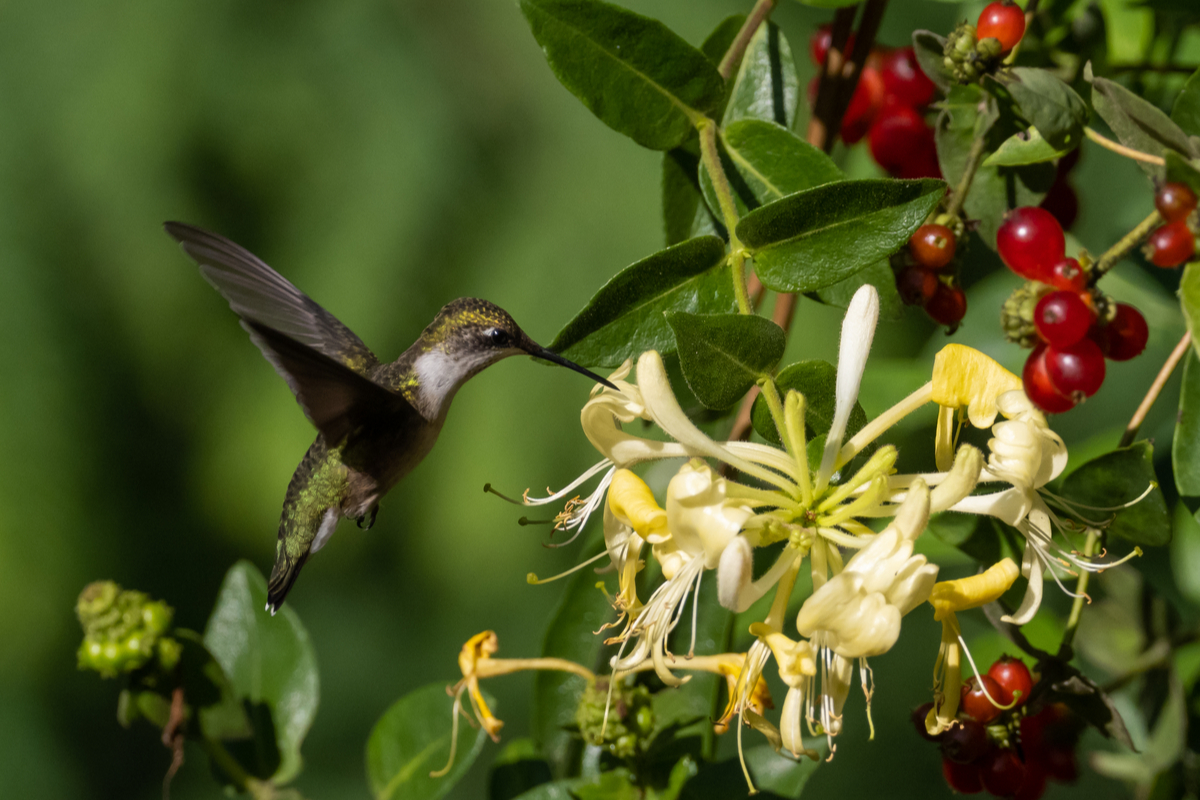
Harken hummingbirds with orange, red, and yellow tubular honeysuckle flowers that thrive in sun to part shade woodland gardens.
16. Trumpet Creeper (Campsis radicans)
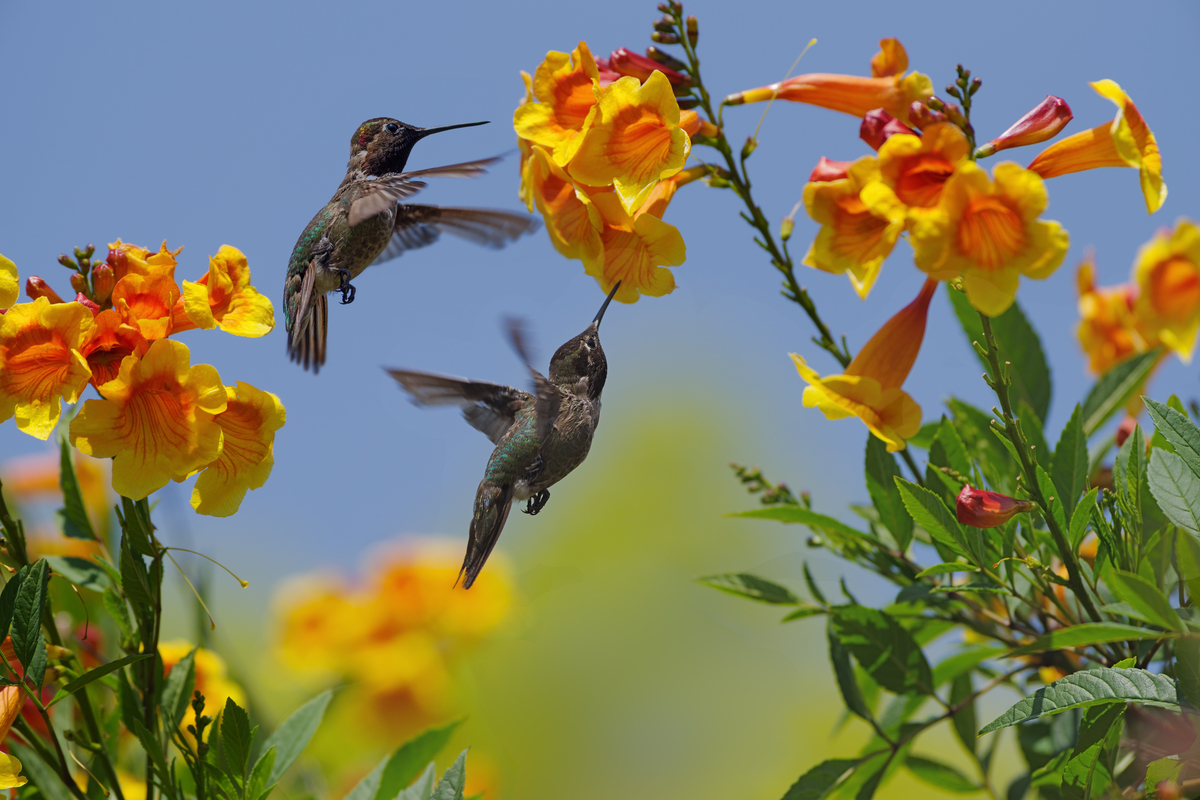
On a supportive structure, the large orange, red, and yellow clusters of 1-to-3-inch tubular summer blooms may reach up to 40 feet in zones 4 to 10.
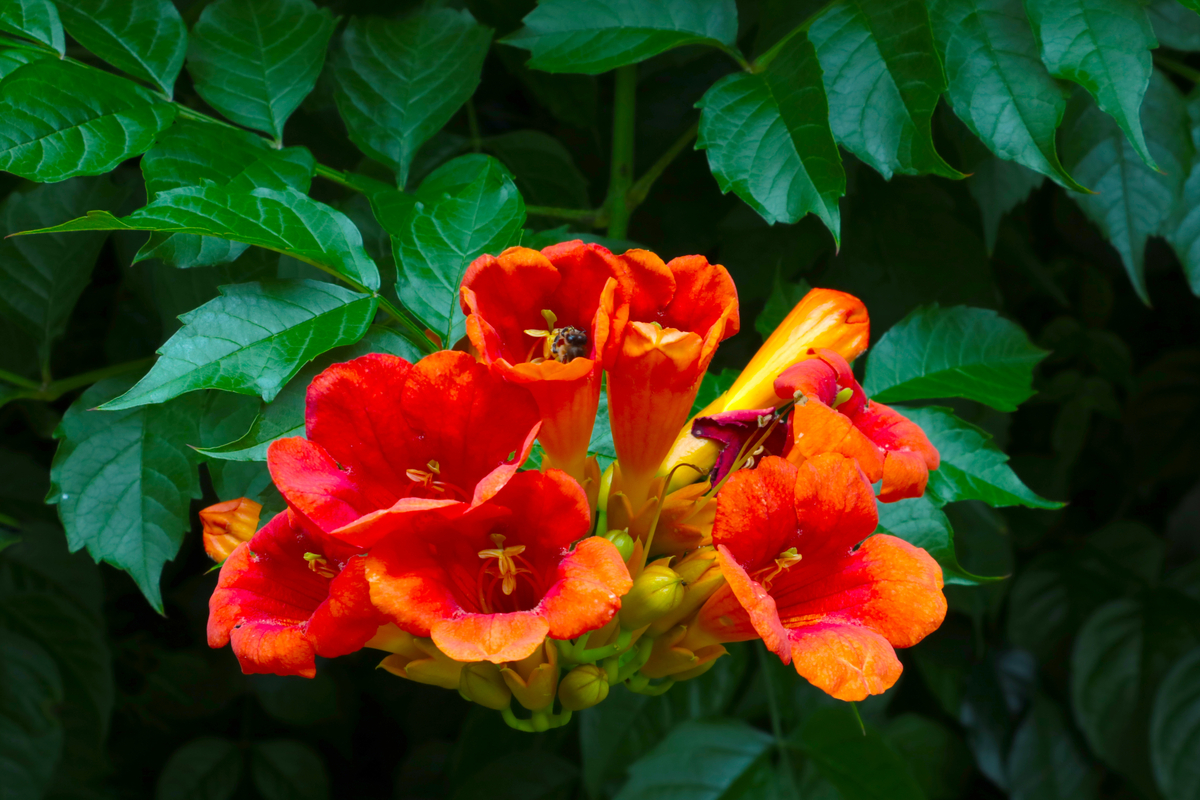
Known for growing in poor soil, this vigorous native vine has possibly been feeding hummingbirds in eastern North America for millennia at sunny forest edges.
Shrubs
Hummingbirds love to put their nests near nectar sources like those found in these blooming shrubs.
17. Butterfly Bush (Buddleja)
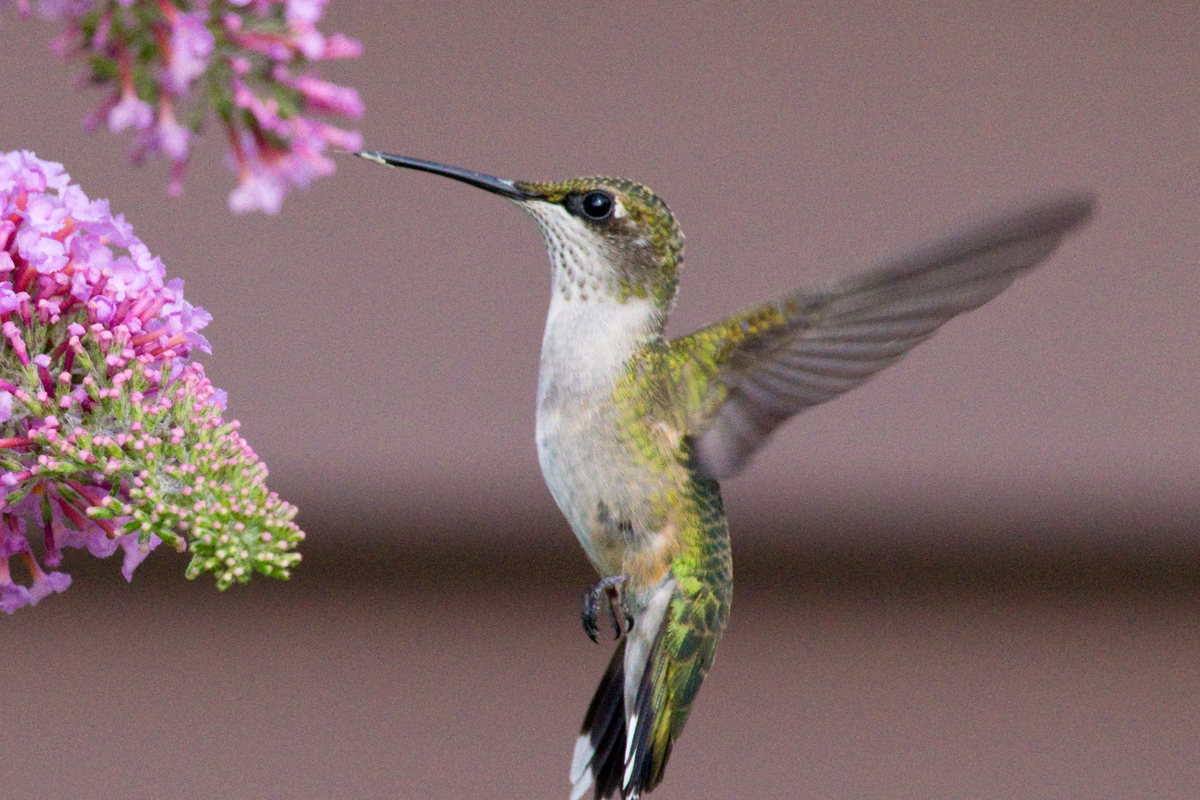
Butterfly bush grows 5 to 6 feet in zones 5 to 10, preferring full sun and well-draining soils.
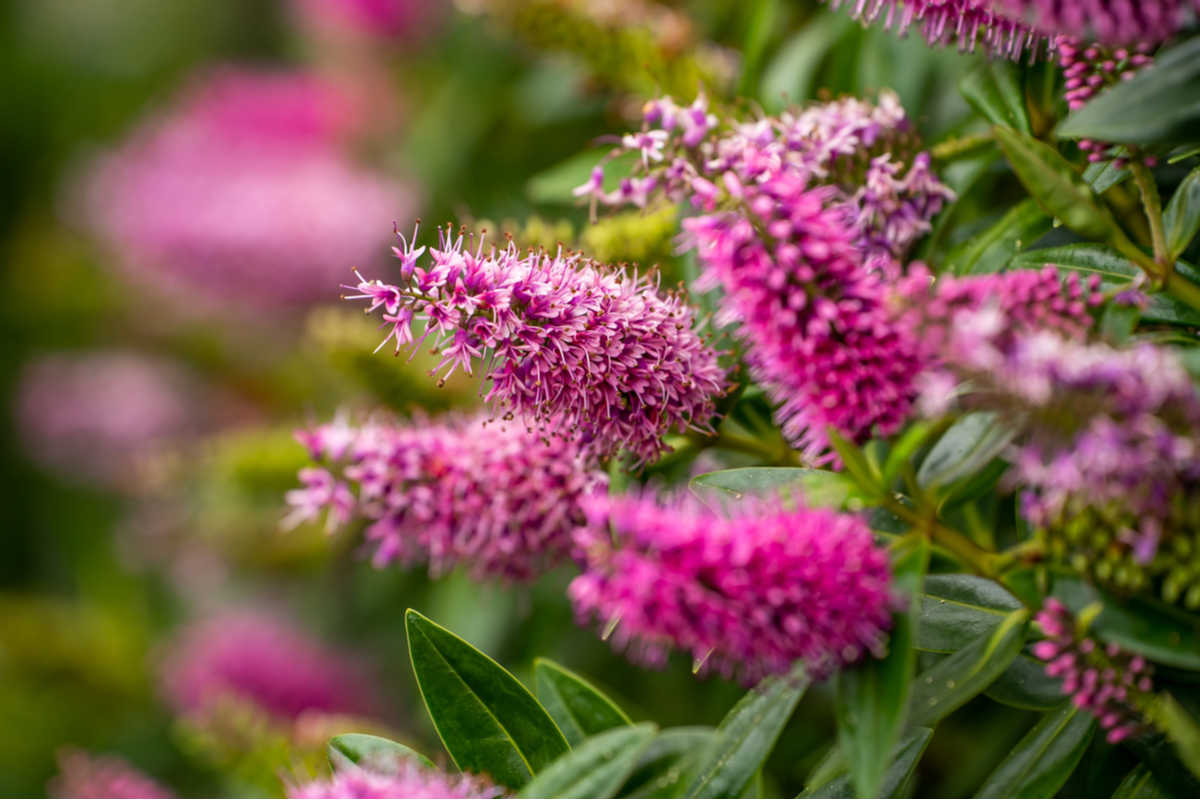
The graceful pendulous lilac-like blossoms famously attract pollinators, and hummingbirds visit the sun-loving butterfly bush too.
18. Rose of Sharon (Hibiscus)
The giant, tropical flowers of the rose of Sharon are red, blue, pink, or white arriving in late summer on 8-to-10-foot shrubs in zones 5 to 9.
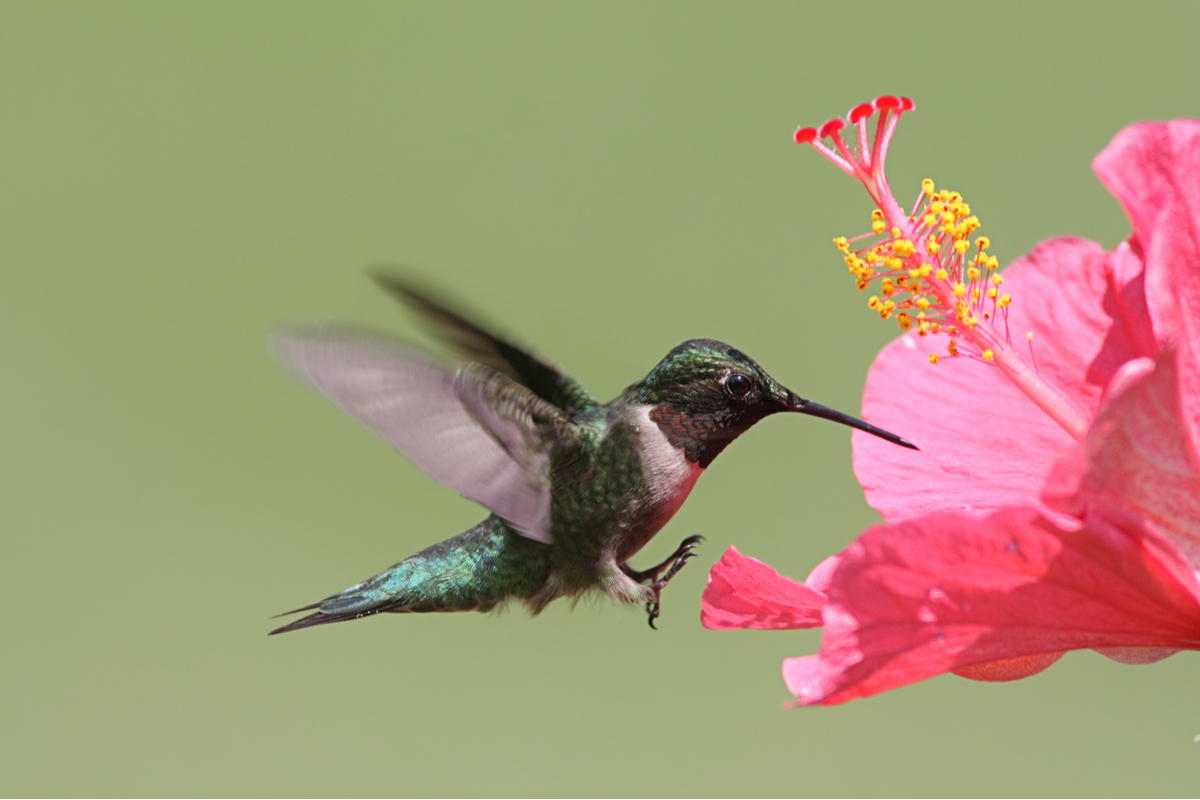
The flat, nectar-filled blossoms attract small insects, doing double duty to nourish hummingbirds in full sun and slightly acidic soils.
Trees
Established trees give hummingbirds reliable rest and relaxation through many generations.
19. Red Buckeye (Aesculus Pavia)
This small tree grows 10 to 25 feet in full sun to part shade in zones 5 to 9, blooming large 4-to-8-inch red panicles in early spring.
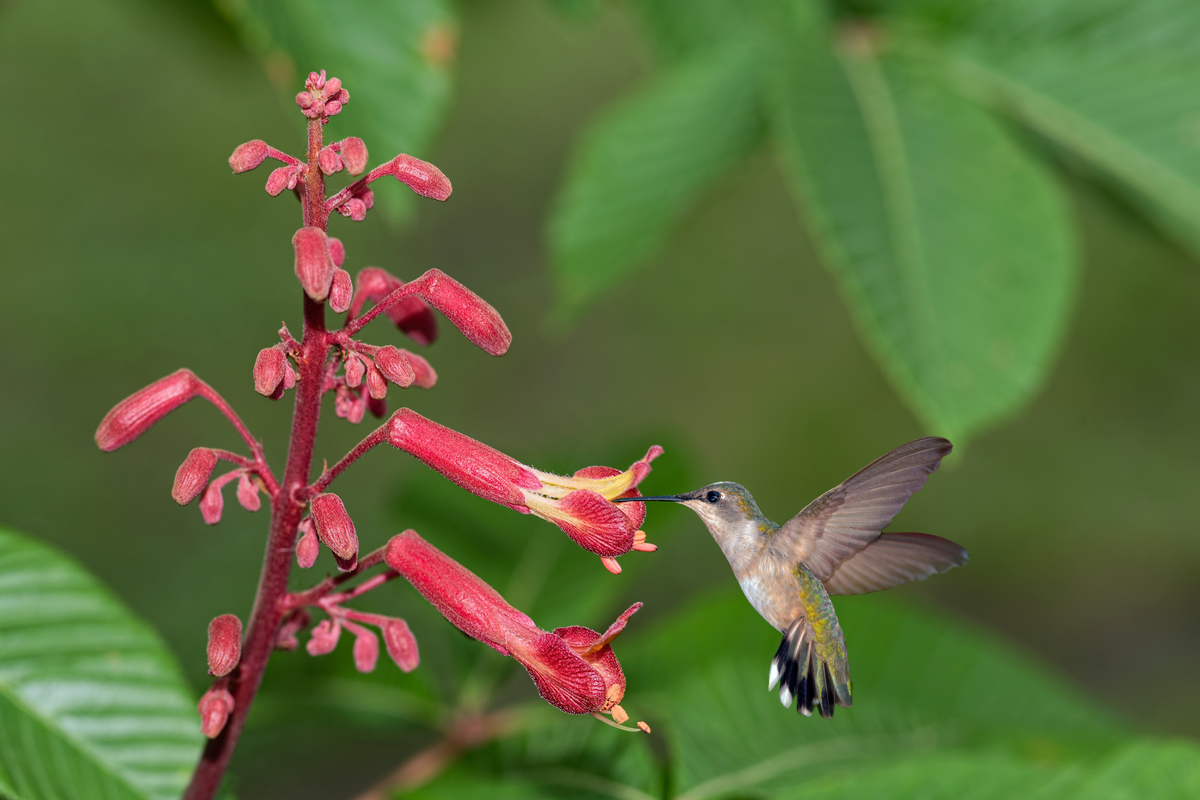
Your red buckeye tree will provide an oasis and well-deserved fuel at the end or during the long spring hummingbird migration.
20. Crabapple (Malus sp.)
A spectacular range of choice for crabapple trees that grow 15 to 20 feet in zones 2 to 11, blooming prolifically with excellent consistency each spring.
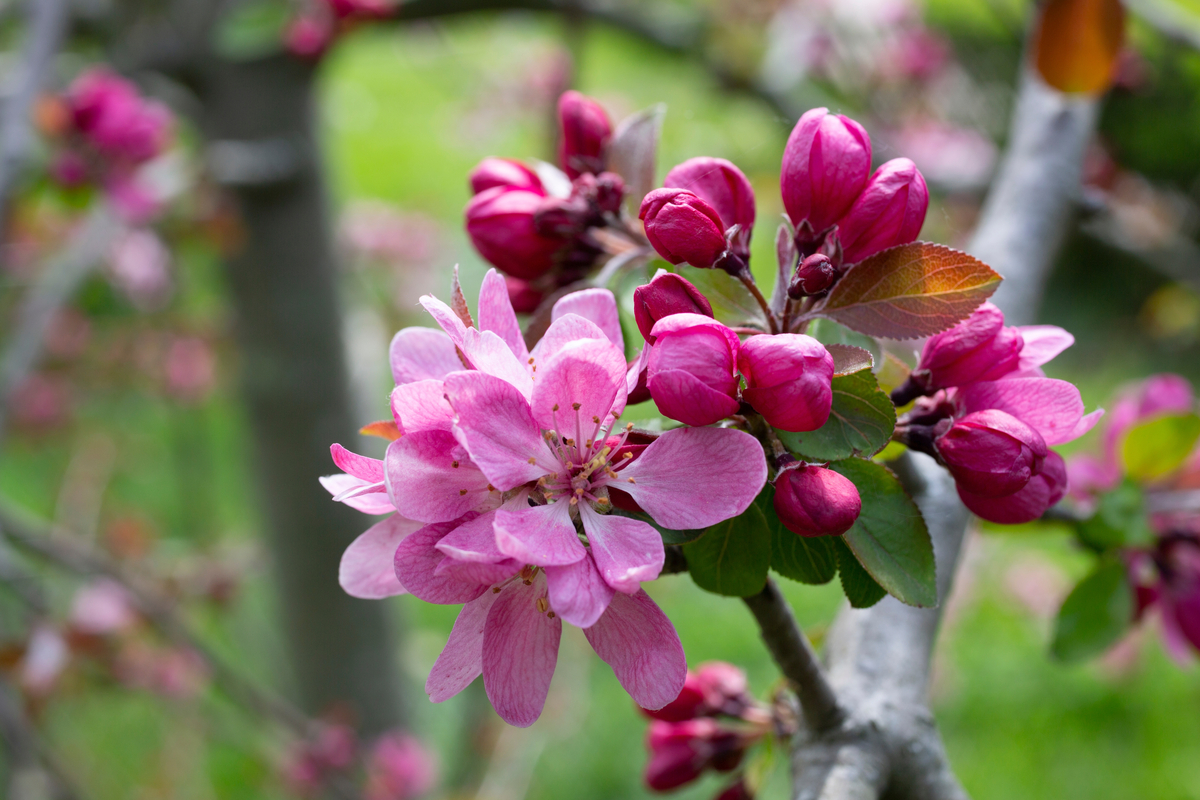
Establish a hummingbird as well as butterfly paradise, crabapple trees in bloom are a treat that importantly nourishes and shelters wildlife in many forms.
Grow Attractive Hummingbird Habitat
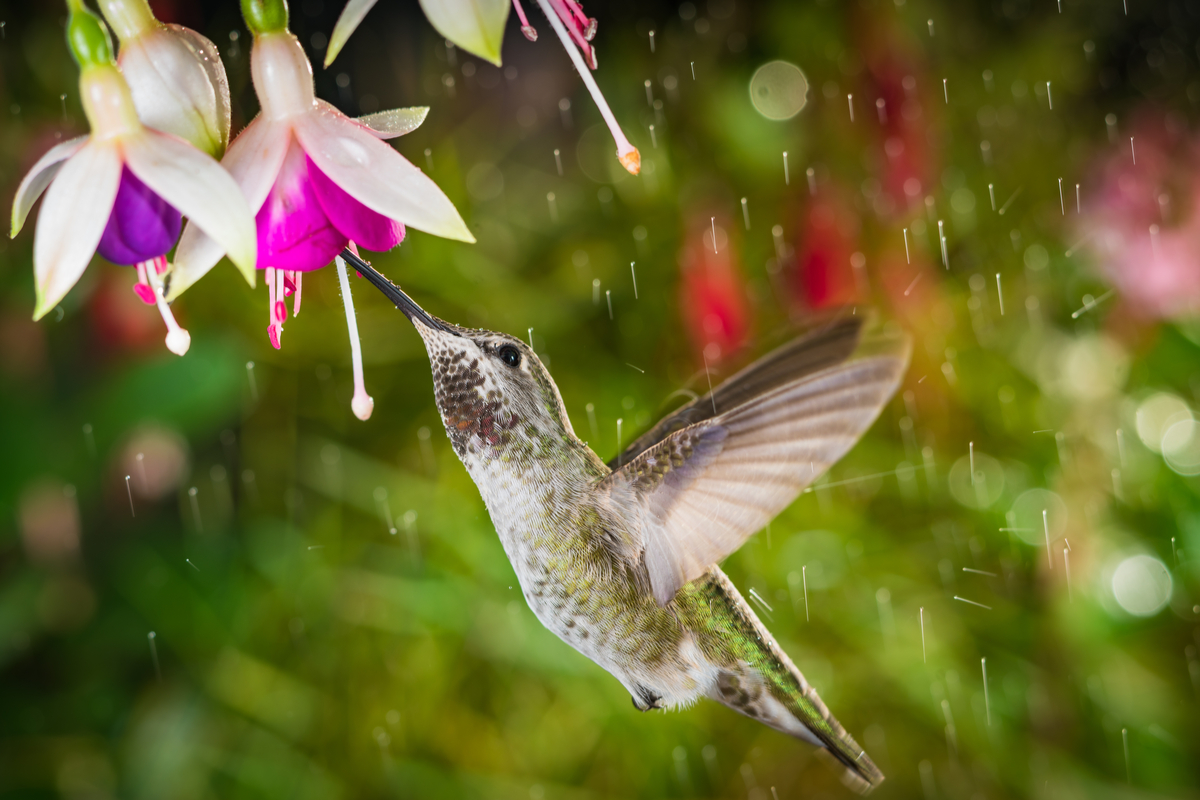
Celebrate every iridescent feather with outstanding environmental stewardship along with these 20 hummingbird-attracting bloomers to add drama and intrigue to the Blooming Backyard.
